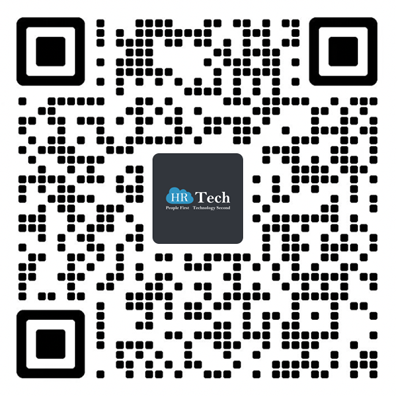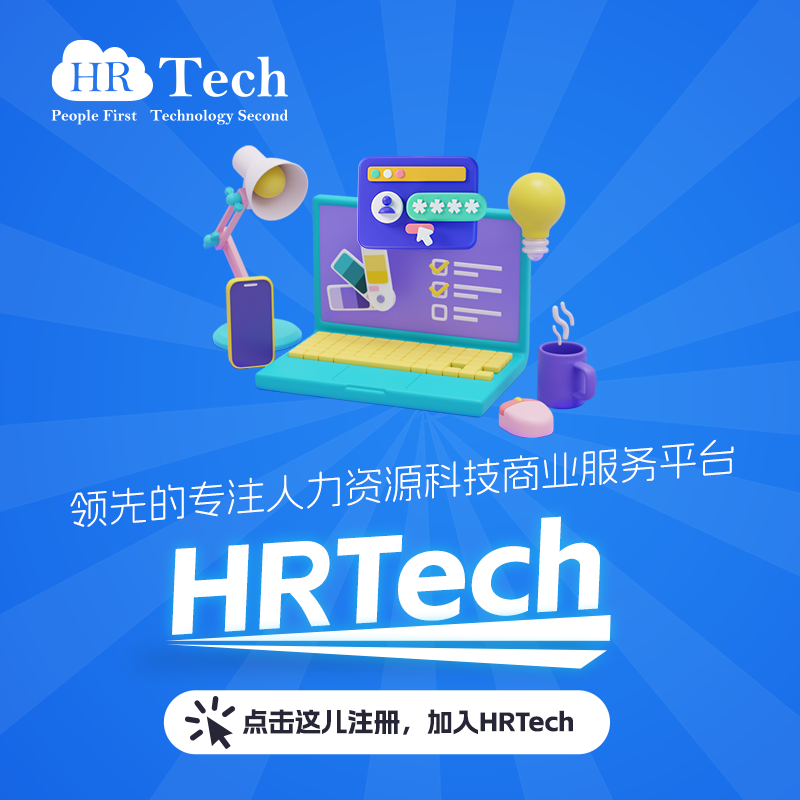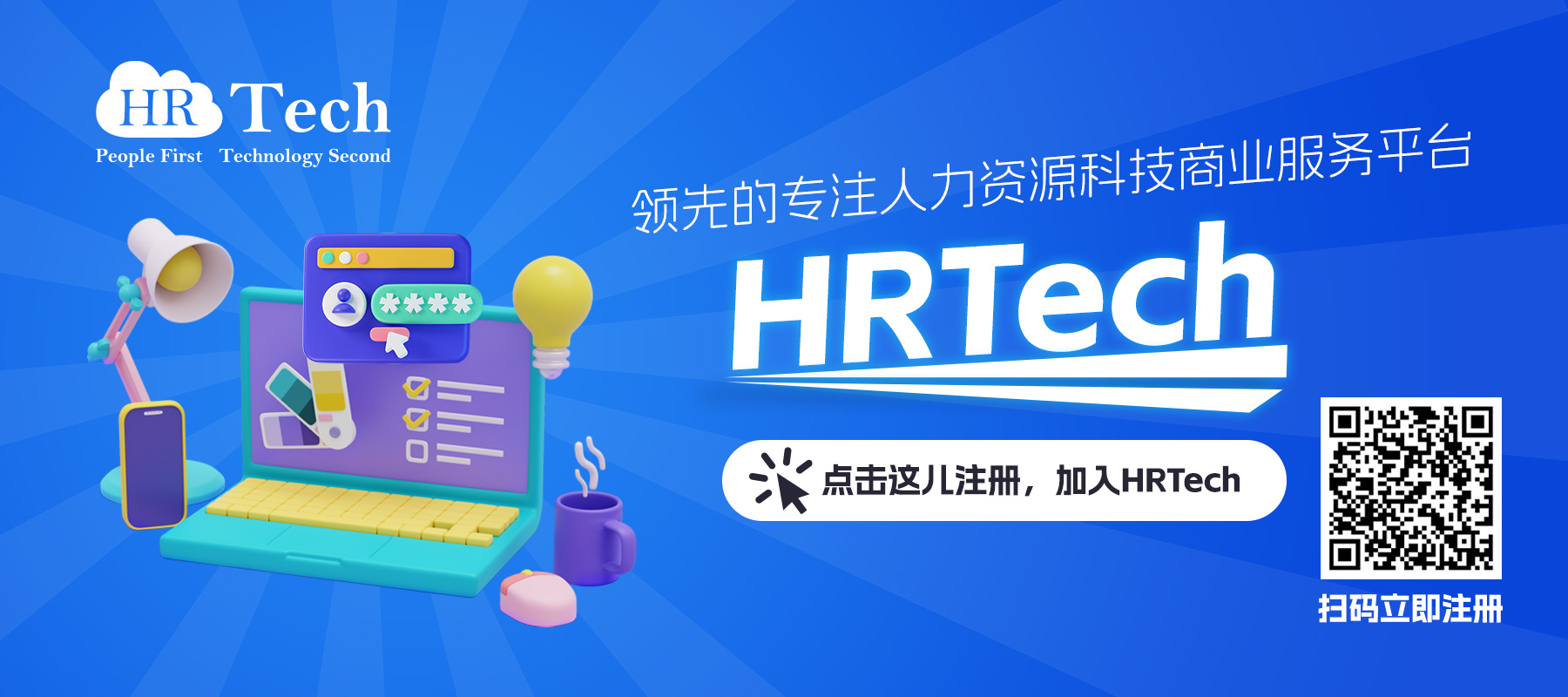未来工作
【美国】混合工作场所平台anywell获得1500万美元的种子轮和A轮融资
重新构想混合工作模式的 "工作场所即服务 "公司anywell近日宣布已经获得了1000万美元的A轮融资,并在纽约和以色列推出了其产品。A轮融资以及之前未披露的500万美元种子轮融资,由Pitango和Viola Ventures领投,Emerge参与。anywell的融资总额已达到1500万美元。该公司将利用这笔投资扩大其在美国和全球主要城市的推广。
虽然研究表明,78%的工人希望他们的工作地点具有灵活性,但其中58%的人目前有混合工作的选择,即办公室和远程工作相结合。寻求满足这些期望的雇主们正在努力制定混合工作计划,提高生产力,同时促进员工健康。在办公室或在家工作的选择对于大流行后的劳动力来说是不够的,而anywell公司通过其“工作场所即服务”的解决方案来迎接这一挑战,允许更灵活的混合工作体验。通过其基于应用程序的系统,该公司将办公室内设施的优势与灵活性和对员工满意度的强调结合起来,创造一个真正适合每个人的未来工作。
Anywell公司的首席执行官兼联合创始人Gadi Royz说:"这种大流行病加速了员工对灵活工作和更健康的工作与生活平衡的需求的永久性转变,而anywell公司帮助企业适应这种不断变化的商业环境,无论他们是混合型还是完全远程型。经过两年的在家工作,员工希望有在任何地方工作的自由,在投资者的慷慨支持下,我们计划为所有人引领一个更加灵活、以人为本和高效的未来工作。"
在雇主承担费用的情况下,雇员(会员)可以使用anywell的按需应用程序,在任何一天选择一个参与的当地场所进行工作--例如,当地的咖啡馆、酒店屋顶--以最大限度地提高生产力。anywell保证现场的商业设施,包括座位、WIFI接入、电源、打印机、技术套件、膳食计划等,使会员能够从任何地方工作,在工作中感到更有成效、更有联系、更具灵感。提供该服务的雇主发现他们能更好地留住和吸引顶尖人才,优化生产力,回馈社会并提升公司文化,而anywell企业则通过保证提前预订、更有信心地管理现金流和更好地了解客户流量,从服务中受益。
anywell目前在以色列和纽约有市场,并且已经与200多家机构合作,从咖啡馆和联合办公空间到酒店、健身房等等。该公司有计划在今年晚些时候扩展到美国其他主要城市以及国际市场。该公司的一些知名客户包括Wix、Next Insurance和ironSource。
关于anywell
anywell是一个首创的“工作场所即服务”解决方案,致力于引领以人为本、灵活工作的未来。anywell与酒店业的优秀企业合作,在当地社区为员工带来鼓舞人心的氛围,提供标准的办公设施,促进工作与生活的平衡,所有这些都是按需提供的,由雇主支付。anywell的客户包括Next Insurance和ironSource等知名企业,他们发现,使用anywell来优先考虑员工的福祉,使员工更受重视,提高生产力,也更能留住员工。
未来工作
大咖谈:为未来的工作做准备-谈到未来工作中需要关注的五大趋势
环境成为核心。越来越多的公司将意识到,他们必须(而且很快可能被要求)适应低碳商业模式。因此,我们需要为降低能源生产和消费做好准备,减少商务旅行,并将办公室迁出低洼高危的洪水区。仅举一个例子,雪佛龙公司的整个商业模式现在是 "更多的利润,更少的碳",主要关注低增长和更高的长期可持续性。
近年来,有一些重大的干扰,有望改变工作的本质。从COVID19大流行病造成的持续转变,自动化造成的影响,以及其他可能对现状的破坏,许多人想知道在就业方面的未来会怎样。例如,麦肯锡全球研究所的一份报告估计,到2030年自动化将消除7300万个工作岗位。
为了解决这个开放的问题,我们联系了商业、政府和劳工领域的成功领导人,以及关于未来工作的思想领袖,以收集他们对未来工作和工作场所的见解和预测。
作为这个名为 "为工作的未来做准备 "的采访系列的一部分,我们有幸采访了Josh Bersin,一位关于工作场所和人力资源的未来的多产思想家和演讲者。
Josh是一位分析家和思想领袖,专门研究全球人才市场和影响世界各地企业劳动力的挑战和趋势。
他在2001年创立了Bersin & Associates,提供相关的研究和咨询服务--后来他把这项业务卖给了德勤,当时它被称为Bersin by Deloitte。2019年,他推出了乔希-伯辛学院,这是世界上第一个面向人力资源和人才专业人士的全球发展学院,他目前是其姊妹研究咨询公司乔希-伯辛公司的首席执行官。
非常感谢你加入我们这个采访系列!我们的读者喜欢了解你的情况。我们的读者喜欢了解你是谁,你从哪里来。你能告诉我们一些关于你的背景吗?你来自哪里?最能塑造现在的自己的生活经历是什么?
我是一名行业分析师、教育家和顾问,自1998年以来一直在人力资源、科技化学习、人才管理和招聘领域工作。在此之前,我曾在多家科技公司担任工程师、营销主管和销售主管。造就我的人生经历是上世纪80年代在IBM的10年,在Sybase的快速成长的职业岁月,以及之后作为企业家的岁月。我还把我们的第一家公司卖给了德勤,因此我在全球咨询环境中做了7年合伙人。我最有价值的教育经历是在高中时参加了辩论队
您预计在未来10-15年内,对雇主来说主要的颠覆是什么?雇主应该如何调整以适应这些颠覆?
毫无疑问,随着时间的推移,最大的颠覆是工作的 "像素化",每个工作都有更多的自动化和技术,而我们作为工人变得不再 "属于 "我们的雇主,而是更多的自由人。过去两年的大流行将远程工作加入到这个难题中,现在有超过2/3的员工有副业。在公司内部,传统的等级工作结构正在被打破,变得灵活,而且随着时间的推移,大多数公司内部会有越来越多的 "人才市场 "和 "演出工作 "类型的安排。
在人力资源技术方面,永远在线的通信和网络应用正在使这种情况越来越容易。大多数公司正一天天变得更加灵活,但这一趋势将继续下去,直到未来许多工人将有多个雇主。
关于一个年轻人是否应该追求大学学位的选择曾经是一个 "不需要考虑的问题"。但随着许多高调的百万富翁(和亿万富翁)没有获得学位,以及许多毕业生背负着沉重的学生贷款债务和找不到工作的事实,这已经成为一个更加复杂的问题。你对考虑是否上大学的年轻人有什么建议?
学位将永远是雇主可以信赖的信号和证书。他们告诉雇主,候选人已经花时间去上学,并学到了有价值的东西。除此以外,除非雇主了解这所大学,也许校友们想雇用校友/他们所知道的东西,否则他们的价值并不高。大多数新的技术和工作评估都是基于第二代人工智能,它不太看重你很久以前的学士学位是什么,而是看工作历史、个人成就、证书、关系、技能,以及我们所说的 "权力技能",如沟通和移情以及解决问题,这些都是通过面试和聘用前的工作任务来评估。
但是,如果你能上大学,就去吧! 它仍然是职业成功的第一决定因素。不要放弃它!
尽管有厄运和悲观的预测,但仍有并且可能仍然会有工作机会。您如何看待求职者不仅要改变寻找工作的方法,还要改变寻找适合其才能和兴趣的工作的方法?
尽管有很多工作场所,但人际关系仍然是找工作的最佳方式。找到一份好工作的最好方法是通过可以推荐你的朋友、同事或更高级的同事。除此之外,LinkedIn 之类的工具非常强大,您可以通过多种方式在那里找到工作。我还会记得你遇到的每个人都是潜在的雇主——所以即使你只是会见其他商界人士或朋友,记住他们与你的关系可能会成为另一个伟大机会的载体。
人工智能和自动化消除了数百万个工作岗位的统计数据,对某些人来说似乎令人恐惧。例如,沃尔玛旨在完全消除收银员,而 Dominos 正在通过无人驾驶车辆提供比萨饼配送服务。人们应该如何规划自己的职业生涯,才能避免被自动化或机器人取代?
不要再认为这自然是一件坏事!就像 PC 和手机自动打字一样,所有这些其他工具都可以自动执行日常工作。所以有两条建议:第一,确保你对新技术感到满意并学习使用新工具;第二,专注于你的力量技能。我的意思是你所有重要的和非自动化的沟通、说服、团队合作、领导力、解决问题、时间管理、解决冲突和内在的人类创造力。即使随着技术使我们拥有的每一份工作都自动化,工作也在不断发展,这些能力也将始终受到需求。
请记住,当技术自动化旧工作时,总会创造新工作。例如,技术进步和流行病限制加速了向在家工作的转变。
技术进步和流行病限制加速了人们向在家工作的转变。您认为这种趋势会持续吗?为什么或者为什么不?
是的,我们已经进入了一个现在可以接受远程工作的新时代,并将继续下去。公司希望员工回到办公室,但远程工作或以混合模式工作总是“没问题”,许多公司将继续接受它。视频和 AR/VR 技术让这一切变得更加容易。
您认为需要哪些社会变革来支持工作的根本变革?
许多事情正在发生变化。人们希望更大的房子有工作空间;他们想要健康和心理健康福利来应对长时间工作带来的压力;他们想要更好的视频和 VR 工具。他们还需要越来越多的用于生产力、项目管理和协作的云应用程序——他们迫切需要更多的学习、培训、在线教育和技能开发平台。总有一天我们会实现零碳交通,让通勤更轻松。
您认为雇主最难以接受的变化是什么?您认为员工最难以接受的变化是什么?
目前,转向混合工作模式正在给大多数雇主带来压力。他们还不确定如何以可持续的方式适应远程工作,而跨职能团队中经理和领导者新的、变化的角色正在困扰着大多数公司。教高层领导如何更善解人意和关怀他人也是一个大课题。创建企业范围内的员工体验和福利战略是目前董事会层面的另一个重要关注点。当然,自动化工作、使人力资源和工作场所工具更易于使用,以及为员工提供一个集成的新平台也是如此。
在这一系列挑战中,我认为像素化工作的想法可能是最难的。经理们觉得他们并没有那么多地“拥有”自己的团队,现在每个人都开始拥有自己的职业生涯,甚至在公司内部也是如此。这会影响领导者、经理、继任计划、绩效管理、薪酬实践等一切:更复杂的是,这一切都是零散发生的。
顺便说一句,薪酬现在是一个非常复杂的话题:当一些员工位于蒙大拿州而另一些员工位于曼哈顿时,我们如何公平地补偿?我们是否根据经验、等级、产出、声誉付费?当地生活费?目前这一切都还不清楚,这一切都需要解决。
COVID-19 大流行有助于突显出许多不同薪酬水平的工人所拥有的社会安全网不足。这是您认为应该解决的问题吗?您认为应该如何解决这个问题?
绝对地。无论公共部门发生什么,雇主都应该向员工支付足够的工资,让他们在生活中感到安全和高薪。提高工资几乎总是会带来更高的生产力、保留率和员工满意度。现在雇主提供教育福利、长期育儿假以及许多职业和福利计划。美国的公共部门如此混乱,我们永远不会看到我们的政府解决这个问题,因此雇主将不得不填补空缺。如今,所有工资和员工支出的 32% 用于此类保险、医疗保健、假期和其他福利——而且还在不断上升。我不相信美国联邦或州政府会在社会保障之外解决这个问题。
尽管我们之前说了这么多,您对工作的未来最乐观的来源是什么?
我认为,每年,工作世界都在变得更好;更公平、更公平、更以技能为中心、更宽容。公司正在努力制定公平和多元化计划、新的薪酬模式以及各种生产力和福利工具。现在,内部使用 AI 可以比以往更轻松地为您匹配“合适的工作”。
个人应该记住,您很可能会活到 100 多岁,因此您的职业会随着时间的推移而改变:您现在可以在一生中拥有多个职业,并且您不会像过去那样完全依赖于您的雇主。如果您继续接受教育和培训,并不断尝试新的角色和项目,您的职业生涯将会充满活力。我知道许多小时工感到被困在他们的工作中,所以这个特殊的经济时期是尝试新事物的好时机——你会惊讶于自己的适应能力如何。
最后,世界现在意识到工作不需要你像过去那样墨守成规。在工作环境中,您可以比过去更多地“做自己”。雇主们意识到每个人都应该能够让他们的“完整自我”投入工作。所以总的来说,我看到了很多关于未来工作的积极因素。
从历史上看,对就业现状的重大破坏,特别是导致工作减少的破坏,是暂时的,新工作取代了失去的工作。不幸的是,失业与新增就业之间往往存在差距。你认为我们可以做些什么来缩短这个差距的长度?
这种经济表明人们可以多快地改变自己。在不到一年的时间里,我们已经从近 20% 的失业率上升到 5% 的失业率,四分之一的美国人在过去 12 个月内改变了工作或角色。就业市场变得更加活跃,寻找新工作的工具比以往任何时候都更容易。真正的经济衰退(我们不能将我们目前所处的位置归类为大流行造成的需求衰退)肯定会伤害人们:公司只是因为没有业务而让人们离开。即使在那种迟早会不可避免地再次出现的情况下,人们也可以一边工作,做零工,并成为创造者经济的一部分。
我们还看到了一些很棒的灵活就业和职业发展的新想法,包括OneTen 计划、退伍军人招聘计划以及雇主正在投资的各种新的工作共享计划,以帮助人们在这些过渡时期从角色转变为角色. 教育、培训和大量低成本在线学习在这里至关重要,因此 LinkedIn 和各种零工市场等工具对寻找新职位的人来说是巨大的帮助。
政府应该继续在这些事情上投资以提供帮助,而失业保险和支持至关重要。当有人第一次失业时,这是一个巨大的冲击,所以我非常喜欢将 3-6 个月的失业保险作为标准福利。
好的,精彩。这是我们采访的主要问题。您的“未来工作中值得关注的 5 大趋势”是什么?(请为每个人分享一个故事或例子。)
1)混合工作。人们将在 "任何地方 "和 "任何时候 "工作。现在的生活意味着,你期望发现自己在另一个国家、另一个城市--基本上在任何地方--为一个项目工作(更重要的是,合作)。这将是常见的,并被完全接受:像Uber、谷歌和苹果这样的领导者都有在家工作的政策,这种趋势将继续下去,尽管有回到办公室开会的呼吁。
2)将员工视为资产,而不是开销。你的团队正在成为你的组织的服务交付和创意引擎。随着时间的推移,公司将把福利和员工体验项目视为投资,而不是支出。Allstate公司多年来一直是这样做的;例如,其所有员工中每年有30%的人改变角色。
3)通过信任进行领导。像联合利华、微软--甚至谷歌--这样的公司将员工和客户的信任视为他们最大的品牌价值。他们现在也在利用这一点来做决策,投资于多样性和公平计划,并帮助发展和保持企业对可持续发展和社会正义的整体关注。
4)环境成为核心。越来越多的公司将意识到他们必须(而且很快可能被强制要求)适应低碳的商业模式。因此,我们需要为降低能源生产和消费做好准备,减少商务旅行,并将办公室迁出低洼高危的洪水区。仅举一个例子,雪佛龙公司的整个商业模式现在是 "更多的利润,更少的碳",主要关注低增长和更高的长期可持续性。
5)机器人最终将在工作中为我们提供信息,而不是取代我们。尽管人们担心科技会取代工作,但事实恰恰相反:你的工作每天都在变得更好一点。这包括人力资源部门。例如,拜耳医药公司使用人工智能平台进行招聘,人力资源团队现在专注于评估优秀的候选人,而不是整天找人。
你能告诉我们你最喜欢的“生活课名言”吗?你能分享一下这句话是如何塑造你的观点的吗?
我的名言是“人生是一场大冒险”。每一天都会带来新的想法、新的挑战和新的机遇,每天您都可以通过日常活动、工作和交流来学习、帮助他人并为社会做出贡献。
感谢您提供这些奇妙的见解。我们非常感谢您在这方面花费的时间。我们祝您继续成功,身体健康。
未来工作
他山之石:混合办公是未来工作的趋势吗?即使我们疫情基本结束了
我相信你也看到了,远程工作依然存在,我们不仅在疫情期间茁壮成长,而且有三分之二的员工喜欢这种工作。远程工作节省了通勤的时间,节省了装扮的费用,并帮助人们处理家里的家庭问题。
是的,有一些问题:我们必须避免视频疲劳,学会控制自己的节奏,当然还要在家里找到一个舒适的地方。但即使有这些问题,这也是一件非常好的事情。
现在,我们已经打破了远程工作的污名(过去是不允许的),公司正在建立混合办公模式。我很支持这种做法。我们已经花了十年时间研究员工参与度、员工体验(EX)和 "不堪重负的员工"。在每一项研究中,我们都发现,灵活的、有同情心的、设计良好的工作场所是非常好的。
1、混合办公对企业有利。
我想强调的第一件事是,混合办公对企业是有益的。即使首席执行官要求人们到办公室来,员工也喜欢以他们想要的方式工作的灵活性和机构。是的,我们有时必须面对面地进行设计会议、销售电话和其他重要活动。但我们中的许多人需要时间进行研究、写作、设计和创造性的工作--所以给人们一个 "去处 "是有意义的。否则为什么我们看到这么多人在咖啡馆工作?
虽然83%的CEO希望员工能亲自回来,但只有10%的员工希望全职回来。
每个尝试过的公司都看到了积极的结果。福特汽车公司是世界上最古老和最传统的公司之一,现在热情地接受了灵活的工作方式--员工们也很喜欢。我访问过银行、保险公司、电信公司和很多软件公司,它们给人们提供了选择,有很多地方可以合作,也有很多地方和时间可以独处。微软的整个园区是一个巨大的混合办公环境,谷歌和其他许多公司也是如此。
我们知道这正在发挥作用。Glint的最新研究表明,工作中的幸福感正在上升。
2、考虑到混合办公的所有层面。
混合型办公不仅仅意味着在家里工作。它意味着考虑地点、时间、商业模式等等。以下是需要考虑的一些方面。
地点:你会让人们一直在远程工作吗?部分时间?只有在经理批准的情况下?研究表明,我们确实需要面对面的时间进行合作、设计和个人互动。所以现在很多公司都有灵活的政策,让经理们决定人们什么时候必须亲自出面。
时区:你们大多数人现在都熟悉全球工作的 "跟随太阳 "问题。你的公司里有人一直在工作,所以你应该考虑 "标准时间 "可能是什么,以及你希望管理人员如何对待偏远时区的人。
工作时间:人们可以时间转移他们的工作吗?许多公司(例如SAP)让员工与他人 "分享工作",以便他们能够处理家庭护理、老人护理或其他问题。轮班工人经常这样做,所以有几十种好的劳动力调度工具可以让这一切变得简单。我建议你把它作为一项政策,只要有人不是一直被同行所忽视。如果你想要24小时的支持,你可以设计 "跟随太阳 "的服务。
每周小时数:你有每周的 "最低小时数 "吗?你应该这样做。大多数员工不会试图突破极限,但如果有人这样做,你需要一个政策来支持。当然,经理们也应该照顾到紧急情况、休假和其他使人们远离工作的干扰。
雇佣关系:虽然我们大多数人在成长过程中都认为工作是一件全职的事情,但这是没有必要的。今天,人们按小时、按工作、按项目工作,甚至根据结果来工作。我把这称为 "像素化 "的劳动力,这是你必须适应的东西。
必要的工具和规范:许多公司通过特殊的工具设置了混合办公。例如,Uber和Lyft的司机,有一个完整的平台用于混合办公。外包的呼叫中心工作人员有远程工作的平台。销售人员、服务代表和顾问也是如此。你可以通过选择与模式相匹配的工具来设计如何 "混合 "工作。
包容多样性:劳动力的多样性也是一种混合形式。在过去,我们期望全日制大学毕业生从事某些工作。但如果工作被委托给工资较低的外国(即印度、罗马尼亚?),那也是一种混合形式。
请记住,职业已经改变。超过2/3的千禧一代有某种副业,所以人们比以前更愿意接受新的工作安排。
3、关注文化
混合办公迫使你谈论文化。为什么?因为不再有 "通过走动来管理"。文化是通过工作实践、管理行为、奖励制度和你提供的灵活性来创造的。讨论这些事情很重要,这样人们就知道对他们的期望是什么,什么是不允许的。
例如,强硬的公司可能会准时开始会议,并要求人们带着相机出席。他们也可能要求人们在某些日子里到办公室来。更加宽松或授权的文化可能有不同的规范。例如,在我们公司,客户会议总是可以打断正常的内部会议)。
当人们进入办公室时,协作可能实际上受到影响。许多客户告诉我们,在大流行期间,他们的公司变得更加团结、协作和有同情心。当人们回到办公室时,有些人告诉我们,人们蜷缩在他们的小房间里,又回到了老样子。作为人力资源部门或企业领导,你必须防止这种情况。
我建议客户花时间反思你在大流行期间学到的一切,并写两栏:进展顺利的事情和进展不顺利的事情。对于一切顺利的事情,花时间与你的领导层就你想保留的东西达成一致。
例如,许多公司在大流行期间大大简化了决策和绩效管理。大多数人告诉我们,他们希望保留这种新的、简化的工作方式。
我们不是要 "回到 "办公室,而是要 "前进 "到一个新的、混合的工作文化。
4、建立一个协作技术平台。
技术行业非常关注这个市场。像Zoom、微软、思科、Salesforce、谷歌、Facebook和几乎所有其他的供应商都在为虚拟会议、协作、知识管理、安全工作场所、福利和视频共享的工具倾注数十亿美元。你和你的IT部门应该看看这些平台,并把一套标准的工具放在一起,一起工作。 我是微软团队和Viva的超级粉丝(我们在这里使用它),但你可以在谷歌工作场所、Slack或其他平台上建立。但要选择一个核心平台。
这些创新是令人震惊的。像Microsoft Teams和Stream这样的平台可以视频捕捉每一次对话,记录会议内容,并立即帮助人们补上他们错过的内容。Loom和Guru等工具可以存储视频和文件,使知识管理成为现实。我们喜欢Otter.ai来转录电话中的语音;EdCast、Degreed、Fuse和Wisetail等平台可以快速创建一个学习门户;WalkMe、Pendo和Spekit等工具可以立即使应用程序更容易使用;Cultivate、Glint、CultureAmp、Peakon和Viva Insights等工具可以捕捉情绪,帮助人们节省时间,并提供在线辅导。
人力资源技术市场正在做后空翻以参与其中。我把它称为人力资源技术和工作技术的合并。每一个人力资源平台,从Workday到Paycom到ADP都在试图建立适应混合办公的功能。我刚刚采访了四家使用Infor的大型制造企业,他们将该平台用于入职、沟通、劳动力调度和员工沟通的各个方面--包括卡车、零售点和许多低带宽地区的工人。
人力资源部门应该与IT部门合作,创建这个工具集。你会惊讶于这些新系统的工作效果,我将首先关注整合。当我们在今年夏天晚些时候推出我们的大型EX研究时,我们将对这一主题进行更多解释,但这是一个让人们工作更轻松的巨大机会。
5、建立一个倾听的平台和文化
正如我在《员工倾听是商业中最重要的实践》中谈到的,混合办公是一个快速变化的情况。人们会不断提出新的想法、问题和建议。你需要定期对人们进行调查,建立开放的对话渠道,并举行大量公开的全体会议。
在我们在大流行期间研究的所有做法中,倾听被认为是最重要和最有影响的。倾听有助于提高生产力、包容性、多样性和保留员工。而这需要一套工具和分析平台,使其容易、可扩展和开放。Workday刚刚花费5亿多美元收购了Peakon;Qualtrics现在价值超过200亿美元;Medallia现在提供端到端的倾听,将反馈引导到正确的利益相关者。这不仅仅是打开SurveyMonkey和发出一些调查问卷:这是一个建立员工倾听平台的机会,并利用它作为前进的方向。
6、将混合办公与福利计划相结合
混合办公对许多人来说是很好的,但它也给员工带来了新的压力。有些人工作时间太长;有些人可能在家里喝酒或滥用药物;有些人可能被家庭成员打断或骚扰;还有一些人可能只是在旅行、互联网或设置安全工作地点方面遇到困难。
你的安康(和设施)团队必须成为混合办公计划的一部分。你将提供哪些心理健康、辅导、健身和福祉方面的好处?你将如何帮助人们伸展、散步,以及如果他们长期处于远程工作状态下的休息?当人们旅行或在路上工作时,你将如何让他们休息?这些都不是新问题,但它们应该包括在你的混合办公计划中。加入Wellbeing at Work我们的合作学习计划以了解更多信息)。
7、将领导层带入对话中
你们中的许多人都记得著名的雅虎惨败事件,首席执行官偷看了每个人的VPN日志历史,并对那些在家但不是全职工作的人进行了严厉打击。如果领导人不信任或不相信你的混合办公计划,那么它根本就不会起作用。而许多领导人,说实话,还不知道是什么感觉。
摩根大通的首席执行官杰米-戴蒙(Jamie Dimon)曾发表过一个著名的诏书:"他希望所有人都回到办公室"。尽管他很成功,但这种信息对许多人来说是反作用的。我们正处于一个非常紧张(并且正在收紧)的劳动力市场:你希望灵活性成为你计划的核心。如果人们在工作中感到受约束、受监视或不受保护,他们就会在办公室 "退缩",以非生产性的方式出现,并在你背后破坏你的公司。让领导参与对话:他们必须对你制定的政策感到放心。
8、在IT安全方面加倍努力。
我花了超过25年的时间进行远程工作,管理远程员工,并在一家远程优先的咨询公司担任合伙人。如果有一件事需要注意:有时会发生奇怪的事情。像盗窃、挪用公款、数据丢失和不良行为等问题不断发生。而我已经看到了这一切。
你的IT安全团队应该审视你的政策,并决定是否需要位置信息、VPN安全或新的密码政策。确保你传达你公司的数据隐私和保护政策,并继续关于行为和领导原则的沟通。我见过很多不良行为是在人们不在办公室的时候发生的,而现在这些行为都被追踪和监控起来,供后人参考。
9、实验新的想法
正如我在上面提到的,远程工作不是 "回去",而是一个 "前进 "的机会。我们不再是 "去上班 "或 "来上班"--我们基本上是在任何地方 "做工作"。这意味着将有很多新的想法尚未出现,所以保持你的头脑开放。
当我们采访了几十家关于混合办公的公司,我们发现了很多新的想法。公司现在正在使用虚拟现实培训来取代飞来的会议。各机构正在提供额外的医疗保健和教育福利,以帮助女性重返工作岗位。经理们正在举行同侪会议,以了解什么是有效的。
10、信任
让我再给你留下一点意见。工作不是一个 "地方"--它是 "人们所做的"。你和你的领导层必须要信任人们。给他们明确的目标、任务、技能和成长--他们会想出如何完成工作。信任仍然是你拥有的最重要的工具之一。
如果你遵循本文的准则,你的混合办公计划将蓬勃发展。而你的公司将以前所未有的方式成长。
作者:大咖Josh Bersin
未来工作
诺华CHRO谈未来的工作:重塑绩效管理,加大员工自主权-以人为本
经常有人问我,去年我们在人和领导力方面学到了什么,它将如何影响我们未来的工作方式。这场大瘟疫极大地、不可逆转地改变了我们以为熟悉的世界,使工作场所发生了翻天覆地的变化。但它也肯定并加速了我们对未来工作方式的解压承诺,更加明确地强调了我们的 "灵感、好奇、解压 "文化对创业精神的需求。
面对挑战或不确定性,我们领导者的本能往往是试图控制。但是,如果不听取员工的意见,不向他们学习,就试图管理和操纵那些复杂、快速变化和不可预测的情况,其实是适得其反的。
通过向我们的文化靠拢,我们在诺华公司采取了不同的方法。我们没有紧抓不放,而是选择让我们的员工,也就是那些真正最接近客户或产品的人,自由地拥有自己工作的重要决定权。
我最近与大家分享了我们未来工作模式的引入,我们称之为 "有责任的选择",是如何让我们的员工更灵活地决定工作的方式、地点*和时间,以发挥他们的最佳能力。但我们的计划还不止于此。
现在,我想和大家分享一下我们是如何通过重塑我们的绩效管理方法,让我们的员工对自己的成长和影响拥有自主权的。
我们的员工比数字更重要 Our people are greater than numbers
两年前,我们发起了一个众包活动,以释放我们的集体想象力,并产生有助于我们实现文化的想法。我们的员工告诉我们,为了让他们能够真正地成长和做出贡献,他们希望对自己的目标有更多的自主权,并希望得到更多的反馈和指导。但最重要的是,我们需要抛弃绩效评级。他们的工作成果不能用一个数字来概括!
经过一系列严格的、以数据为驱动力的实验,涉及到全公司16000多名员工,今年1月,我们向数字挥手告别,向影响力问好。
我们的新方法是以人为本,而不是以系统为中心,绩效评级已经成为过去(Our new approach is people focused rather than system focused, where performance ratings are a thing of the past)。它围绕着四个要素建立,鼓励学习和成长,使我们能够充分发挥个人、团队和公司的潜力。它不仅为我们的集体成功提供了一个路线图,而且还为我们如何思考绩效提供了一场彻底的革命,并以我们的价值观和行为为基础。
1)目标。我们不是在寻找任务清单, 勾选框和分数。我们需要的是跨度多年的大胆目标,这些目标是自创的,也是团队合作的,能够激励我们所有人产生影响,推动变革创新。
2)反馈。在这一年中,我们鼓励我们的员工频繁而及时地寻求、给予和接受反馈,授权他们掌握推动业务发展的主动权,并通过辅导和频繁的、前瞻性的对话来支持他们,而不是以评级为导向的年度审查。
3)认可。付出的喜悦会有很长的路要走。我们不再只向管理者寻求认可,而是让我们的员工在全年中对同行和同事进行表彰--表彰他们的贡献、协作和引发成功的行为。
4)奖励。我们将影响力作为奖励的基础,更加强调我们如何合作和共同实现。
我们的核心是问我们的员工:你想在哪里产生影响?
领导者作为教练
我们知道,员工是我们最大的优势,所以我们需要我们的领导者专注于挖掘他们的潜力。
我们新的绩效管理方法帮助我们的领导者成为推动者。通过学习和练习 "在场"、"提问 "和 "倾听学习 "的技能,我们的领导者可以承担起释放员工力量和潜力的责任。
就像学习在 "大流行的世界 "中运作一样,学习如何在未来一起工作--无论是虚拟的、实际的还是两者的结合--取决于我们的敏捷和反应能力。它不需要等级制度,也不需要更多的控制;它需要的是在复杂和不确定性中茁壮成长的领导者,他们愿意并能够给员工提供成长的空间和自主权。
下一步是什么?
最近,一位同事分享了爱因斯坦的一句话,总结了这一切。
"你不能用一张旧地图去探索一个新的世界。" - 阿尔伯特-爱因斯坦(You can't use an old map to explore a new world." - Albert Einstein)
疫情正在推动企业寻求新型员工的新工作方式,摒弃旧的管理原则。在诺华,这正在加速我们的文化转型--以便我们能够实现变革性创新,并改变全球患者的生活。
通过重塑绩效管理,我们创造了一个环境,让我们的员工能够成长、贡献和发挥最大的作用。因为我们的员工比数字更重要。而他们对我们患者生活的影响则要大得多。
这是一个需要时间和面对一些失败的旅程,在未来的几个月里,随着这些项目成为我们日常工作生活的一部分,我们将检验我们的愿望。我期待着与您分享我们在旅途中所学到的东西--高低起伏 有一件事是肯定的,我们都需要开放并愿意改变。但当我们重新想象未来的工作时,我相信我们可以保持好奇心,不断学习,并一起享受这段探索之旅。
在诺华,我们的员工不仅仅是数字。当他们告诉我们他们希望对自己的目标和影响有更多的自主权时,我们倾听了他们的意见。因此,我很高兴与大家分享,我们正在通过重塑绩效管理,在为未来工作解围的旅程中迈出下一步。
作者:Steven Baert
诺华公司的CHRO,热衷于塑造文化、领导力和组织,以重塑医学。
原文:
Goodbye performance ratings, hello impact!
未来工作
【德勤观点】激活内部人才市场,加快劳动力的弹性、敏捷性和能力,并影响未来的工作。
随着内部人才市场(internal talent marketplace)战略的快速发展,迭代设计可以加速采用,并改变组织对未来工作、劳动力和工作场所的思考方式。
卡尔是一家媒体和技术公司的区域产品经理,在为2021年做准备时,他正在评估今年哪些人才战略效果不错。他的团队面临着需求的增加,他不得不连夜从其他部门调派具有可转移能力的员工。幸运的是,他能够在公司最近推出的内部人才平台上发布关键项目,并迅速找到有能力的内部人才。
惠特尼在一家地区银行的财务部工作。在别人的启发下,她希望通过一些有意义的工作为社会做出贡献。她所在的公司有一个内部人才市场,这使她找到并申请了一个社会影响项目,在组织的社区中指导实习生,从而实现了她的个人愿望。
以上两个场景都凸显了各行业、各地域的组织正在探索的一个概念:内部人才市场。这种相对较新的人才运营模式为人才的获取、流动和管理提供了一种创新和灵活的方法。内部人才市场通常托管在一个技术平台上,将员工与组织内外的机会联系起来。它使管理者能够推广不同的角色,并帮助组织快速部署、激励、发展和保留员工。
随着这一概念的发展,下一代人才市场的愿景不仅仅是将人们与全职角色相匹配--虽然这也是其中的一部分。1 这种人才模式有可能改变组织对工作的思考方式(通过将工作碎片化以提高效率)、劳动力(通过释放更大的潜力和价值)和工作场所(通过打破孤岛)。
如果做得对,通过迭代设计,内部人才市场可以在人才招聘、流动和管理方面带来广泛的好处,改变劳动力,提高组织的灵活性。它可以提高员工队伍的绩效2和生产力,促进创建更灵活的团队,并提高员工队伍的能力。
它还可以通过提供个性化的学习与发展和技能培养机会,同时促进透明度、多样性、公平性和包容性的提高,从而增强员工队伍的能力。最近的一项研究3 发现,受访者认为,人才市场在带来一系列其他潜在好处的同时,还带来了三个最大的好处:作为工人赋权的来源;随着业务需求的变化,特别是在不确定的时期,作为内部人才流动的促进因素;作为文化变革的工具,特别是培养更大的创业精神。
人才市场的迭代设计是怎样的?
为了更深入地了解如何建立一个能够为组织和员工带来价值的内部人才市场,德勤与13家目前正在投资此类平台的企业进行了交流。与我们所做的其他研究一致, 我们发现,在通过采用市场来改造劳动力方面,没有一个放之四海而皆准的方法。这些组织共同将其描述为一个不断定制和学习的过程,并着眼于小胜。在这些组织中,我们观察到三种不同的市场设计战略(在下一节中详述),这些战略通常是由人才或L&D发起的,但后来发展到包括绩效管理和创新。还有各种模式定义了谁应该拥有和管理劳动力转型项目团队。首席人力资源官(CHRO)通常与一个跨人力资本学科的跨职能团队一起参与转型计划。在某些情况下,专门为此目的设立了一个新的职能,如 "人才数字化负责人"。在大多数情况下,虽然重点是从内部开始的,但市场的长期目标是超越内部员工队伍,关注外部人才,并利用数据来了解人力资本的生产力和潜力。
此外,每个公司都强调了成功实施市场的一些关键步骤。这些步骤包括
在实施市场的过程中保持敏捷性和迭代性
绘制用户旅程图
让管理人员成为倡导者,并与人才招聘合作。
创造一种文化,促进人才和职业流动,鼓励员工在团队或组织之外寻求新的体验。
鼓励 "回旋镖员工",接受偏离传统等级制职业发展的 "非常规职业道路"。
人才市场是根据每个组织的劳动力战略和文化高度定制的,实施上述任何一个步骤都需要持续的转型和灵活性。有鉴于此,企业应考虑采用迭代设计方法,从最小可行产品(MVP)开始,逐步走向成熟和采用,而不是单向的。
迭代设计过程应该是动态的,并使组织能够通过四个 "P"--目的、计划、方案和平台purpose, plan, program, and platform--来定义其市场愿景。这些步骤中的每一步都很重要,应该循环重复,以确保战略、变革计划和使能技术能够根据人才市场成熟的速度不断发展。
以下是组织如何在四个 "P "中推进人才市场的迭代设计。
目的:根据不同的可能用例和可衡量的结果来定义你的战略。
计划。确定激活内部人才市场所需的迭代步骤。
方案。界定有利于人才和职业流动的政策和程序。
平台。努力建立综合技术生态系统
目的:独树一帜,发展战略 Purpose: Be unique and evolve your strategy
我们采访的组织根据其独特的目的,采取了三种不同的市场实施战略,而这些目的主要是由该计划所期望的、可衡量的组织成果所决定的。这三种方法是
以提高业务生产力和工作管理为目的的人才部署--58%的受访者用 "部署 "一词定义市场目的,如技能匹配/匹配。
以提高人才和职业流动性为目的的人才流动和管理--约50%的受访者用 "流动/人才流动 "来描述市场目的。
"未来工作 "模式。这是一种进化模式,旨在通过将人才、职业、参与度、绩效、生产力和创新结合起来,在整个工作和劳动力生态系统中创造更大的价值--25%的受访者将其目的描述为 "整体/单体 "战略,甚至实现 "多样性 "9(图1)。
我们还发现,随着市场的成熟,大多数组织都在不断演变其战略。例如,世界银行最初在招聘冻结期间作为培训和项目工作的内部市场,最终发展成为支持员工参与和多样性的市场 --这是一种进化模式。正如技术提供商甲骨文公司人力资本管理(HCM)产品战略高级总监Christine Yokoi所说:"人才市场可以成为促进创新、探索和发现的'引擎'。"
计划。注重原则和行为;让管理人员参与‘
每个组织都有独特的文化和围绕人才流动的不同管理实践--这也是决定哪种市场模式最适合它以及人们如何与平台互动的原因。希望制定整体市场战略的组织,最好从关注指导转型的原则和他们需要改变的行为开始,以加速采用。让管理者参与进来是这项工作的关键一步。
我们所采访的组织关注的一些关键原则是。哪些人可以在市场上添加和访问角色和项目;提供什么类型的工作;以及如何将工作分解成项目(即,将工作分片)。Gloat和Unilever11发现,由于管理者以角色为导向的思维方式,他们认为将工作分片化具有挑战性,而人才招聘在将其转变为以项目为导向的思维方式方面可以发挥关键作用。Prudential Financial的首席人才和能力官Vicki Walia强调了工作碎片化的重要性,她解释说,如果组织能够将工作--例如,用户体验设计--分解为其组成部分,并建立一个市场,寻求专家来完成工作组成部分,而不是让人去填补某个角色,他们就可以改变工作的方式。这也可以帮助人才实现工作/生活的平衡,并长期延长他们的就业能力。
人才市场为企业提供了一个重新思考工作设计的机会,并以不同的方式来捕捉和管理工作,重点在于。
学习如何以不同的方式开展工作
重新设计工作,以不同的方式看待任务。
建设支持这项工作的技能和能力
差异化配置人才,适应新的工作思路。
组织也在寻求影响那些阻碍计划进展的行为。他们从让经理人和人事领导为市场做好准备开始,让他们参与到计划中来。事实上,我们采访的每一家公司都将经理人的参与度列为人才市场成功的首要推动因素。这是因为如果没有强大的演出供应(无论是全职还是兼职),市场就不可能存在,而这是经理的特权。令人惊讶的是,46%的经理人抵制内部流动,12而这种行为--由于管理激励机制的不对等而被强化--通常会使人才囤积文化永久化。13劳动力优化公司ProFinda欧洲、美洲和亚洲区总经理Alpesh Patel说:"即使是最优秀的企业公民经理,也可能不愿意失去他们最好的员工。我不能100%确定你如何打破这种循环,但技术可以带来一些透明度。"
方案。采用迭代式变革管理方案,以改变文化。
内部人才市场的采用是一项相当大的劳动力转型举措,不可能一蹴而就。为了成功转型,组织应该考虑实施一个迭代式的变革管理计划,在整个劳动力管理实践中进行迭代式设计,帮助利益相关者轻松融入新文化。虽然通常的变革管理要素会适用,但人才市场的采用有一些独特的方面,比如让管理者参与进来,需要重新审视文化(图2)。然而,我们采访的所有供应商都认为,大多数进行转型的客户都低估了在人才管理、绩效管理和L&D中实施变革管理政策和流程再造的重要性。
企业还应该围绕人才流动采取灵活的政策和流程,以获得人才的认同。基于SAP在人才和技术方面的长期经验,Ludlow建议,为了促进成功的转型,企业要确保其政策像实施 "创新理念 "一样具有流动性和灵活性。然而,现有的内部招聘流程通常是人才流动的障碍,49%的受访者认为这是一个挑战,并表示这需要人才招聘以及法律和劳动力顾问的协同关注15。
人才市场有可能形成一种促进人才和职业流动的文化。它可以让员工和管理者将技能作为货币使用,16建立员工人才库,并促进网络建设。在最好的情况下,真正的流动文化可以鼓励 "回旋镖 "式的员工离开团队或组织,获得新的经验,并在回来时变得更加强大。例如,谷歌的 "变色龙项目 "就积极鼓励员工在团队和部门之间流动,以体验新环境和新挑战。
平台。努力建立综合技术生态系统
除了设计变革管理计划以建立所需的文化外,组织还应该为其内部人才市场采用或建立正确的技术平台。鉴于49%的组织承认他们几乎没有技术工具(如果有的话)来识别和调动员工进入新的内部角色,19因此,重新构建现有系统平台是技术转型项目的重要组成部分。
我们所采访的企业考虑采用三种主要的平台方法--购买、构建或适应,以提供智能和可扩展的角色与人才匹配,打破孤岛,并创造透明度。所有这些方法都涉及到人工智能(AI)的使用,并需要嵌入到一个灵活的、集成的技术生态系统中,以获得最佳效益。
以下是这些方法所包含的内容。
购买: 评估由大量技能数据驱动的人工智能技术,为市场提供动力,并对其进行投资。
构建。在现有的解决方案生态系统中构建一个定制的解决方案或平台层,以增强数据隐私。
适应。扩大数据集中的人力资本管理系统。
受访企业承认,由人工智能驱动的人才市场平台可以促进人员与机会的规模化匹配,并支持预测分析,以提供更多个性化的机会和职业发展路径,以培养人才。为此,他们要么与现有的HCM供应商(Workday、Oracle、SAP等)合作,要么雇佣一家利基厂商,要么自己构建AI核心。
但要想让AI驱动的解决方案发挥作用,企业通常需要首先实现规模化,以训练AI引擎,并确保市场上有足够的项目来满足寻求机会者的需求。戴尔科技公司最近试行了一个内部机会市场,并正在全公司范围内推广该项目。正如戴尔人才与文化总监乔西-特林所说:"我们希望所有团队成员和领导者都能获得未来集体成功所需的机会和人才。这意味着,在大多数情况下,我们需要在市场上拥有成千上万的人,以确保人才和工作机会的丰富。想象一下,任何以消费者为主导的在线市场,如果缺乏买家和/或卖家--它将无法自我维持。"
虽然认识到基于人工智能的解决方案的价值,但来自SuccessFactors的Ludlow建议企业超越人工智能的思维,因为历史角色和经验在匹配和预测共同的职业发展路径方面很有价值。他补充说,组织应该具有一定的灵活性,以释放劳动力潜力--工人的新视野或组织的新技能--这些可能是人工智能引擎无法提供的。
为了实现市场平台的全部潜力,其架构应该嵌入到一个集成的技术生态系统中,贯穿人才获取、人才管理、L&D和绩效管理。此外,企业--尤其是那些高度监管的行业--需要找到保护平台上机密数据的方法。例如,为了在推进市场愿景的同时保护机密性,保诚金融决定在人力资源系统中建立一个平台层,使用AI供应商进行技能搜刮,并建立自己的AI引擎--从而在一个生态系统中设计一个多点解决方案。
企业还应该思考如何从平台提供的大量新人数据中获益。除了帮助衡量劳动力生产力,市场平台还有助于实时劳动力分析,帮助制定继任计划,并加强多样性、公平性和包容性举措。正如ProFinda公司的Patel所说,通过平台化,组织可以获得高达8%的生产力提升--否则只有通过劳动力自动化才能实现。实时劳动力分析可以实现主动和预测性的劳动力规划,同时支持提高技能、重新技能和预测性的职业发展路径。在阐述这一点时,TalentGuard的首席技术官Frank Ginac建议将市场数据与经过验证的技能和能力数据相结合,以分析更广泛的劳动力趋势,并预测未来的人才需求。
实现人才市场愿景
正如我们前面所说,在劳动力转型方面,没有一个放之四海而皆准的人才市场采用策略。
但根据我们与成功采用这种内部人才市场的组织的对话,以下是企业可以采取的一些关键步骤,以激活其全部潜力。
明确内部人才市场的独特目的,与业务目标保持一致。
让管理者、人才招聘和员工成为转型的重要支持者。
实施灵活的变革管理计划,让管理人员参与进来,并保持灵活的状态。
评估如何在整个生态系统中整合技术,以加强人才和职业流动的文化,并为整个组织创造价值。
从小处着手,快速学习,让市场战略不断发展,长期迭代。
视频游戏公司Electronic Arts的人才和职业流动主管Steve Brown谈到了他对人才市场的愿景。"我们期待的是,员工可以看到他们的职业道路,并通过经验获得成长的机会。而我们作为一家公司,可以看到我们内部的人才以及他们的技能、能力和经验,并能建立起将他们与机会相匹配的能力。" 他认为,这将使公司在吸引和留住人才、提高员工参与度、推动创新和推进文化建设方面脱颖而出。有了这样的全局观,人才市场可以改变企业对工作、劳动力、职场以及三者之间的多维关系的思考。
此外,正如来自花旗集团的Cerda所言:"COVID-19所经历的一切,为我们提供了一个千载难逢的机会,让我们重新思考过去开展业务的方式,包括我们与位置相关的假设。过去,地点可能是招聘和人才流动的障碍,但现在,似乎有更多的机会,因为我们的眼光超越了地理限制。在这种对流动性的看法下,我们正在重新思考内部人才培养和如何吸引外部候选人。归根结底,拥有合适的人才是一个混合体,既要在内部提拔人才,培养现有人才,也要为组织配备新的外部人才。"
由于组织不得不扩大和灵活其人才模式,以满足业务和劳动力需求,这一流行病加速了市场的采用。
直到今年早些时候,人才市场还是作为一种 "下一代 "解决方案,有早期采用者和一些快速跟进者。但由于大流行,它的采用速度加快,并在组织必须扩大和灵活其人才模式以满足业务和劳动力需求的时候带来了胜利。如果组织能够用迭代设计的方法激活人才市场的愿景,它们就能更好地管理劳动力的期望,改变工作的重新设计,并为未来的工作加速。
以上来自德勤deloitte有删减
https://www2.deloitte.com/us/en/insights/focus/technology-and-the-future-of-work/internal-talent-marketplace.html
未来工作
未来的工作是通过劳动力生态系统来实现的。
编者注:HRTechChina发布的2021年HR科技趋势中谈到混合式的劳动力管理,特别刊登MIT的这篇文章与大家分享交流。
今天,如果问领导者如何定义他们的劳动力,你会立即听到一些版本的 "嗯,这已经成为一个非常有趣的问题,最近更是如此。" 今天的劳动力不仅包括员工,还包括承包商、临时工、专业服务提供商、应用开发人员、众包贡献者等。
有效管理由内部和外部参与者组成的劳动力,使其既符合组织的战略目标,又与组织的价值观保持一致,现在是一个关键的业务需求。然而,传统的管理实践仍然是围绕着越来越过时的以员工为中心的劳动力观点来组织的--它由一群受雇的员工组成,他们沿着线性的职业发展路径开展工作,为组织创造价值。
在我们对2020年全球5118名经理人进行的调查中,75%的受访者认为他们的员工队伍既包括员工,也包括非员工。不同类型工作安排的种类、数量和重要性的增长,已经成为企业内部(以及为企业)完成工作的关键因素。
我们看到许多公司都在尝试以综合的方式管理所有类型的工人。在整个商业格局中,已经出现了一些新的管理实践。即便如此,在战略和运营上处理这种跨越内部和外部界限的分布式、多样化的员工队伍的最佳实践仍然很少,甚至没有。那些寻求综合方法来管理未整合的员工队伍的高管们都是一无所获。
我们认为,将这些转变和相关实践概念化并加以解决的最佳方式是通过劳动力生态系统的视角。我们将劳动力生态系统定义为一种结构,它由来自组织内外的相互依存的行为者组成,努力追求个人和集体目标。
管理劳动力生态系统不仅仅是努力统一目前围绕员工和非员工组织的不同管理实践。这是一个新问题的新方法,需要一个全新的解决方案。我们的观点来自于两年的研究,其中包括两项全球高管调查和对领导者和学术专家的采访。这篇简短的文章介绍了劳动力生态系统的概念,并讨论了它们如何帮助管理者重新思考他们调整业务和劳动力战略的方式。
关注劳动力生态系统的四个理由
下文中,我们强调了一系列转变--由技术、社会和经济力量驱动--当前的管理实践并没有充分应对这些转变。我们的新兴研究表明,劳动力生态系统可以使管理者更有效地应对这些变化。
变化1:更多的非员工正在为企业做更多的工作。根据一些估计,非员工负责执行企业25%以上的工作。许多消息来源表明,这种依赖性预计将增长,这在很大程度上是由平台的兴起推动的,这些平台使工人更容易参与按需、特定任务的工作(这种类型的工作本身预计将增长)1.这种转变与另一种转变相吻合:高技能的创意或技术工人(如数据科学家)的数量增长,他们更愿意为一家或多家公司从事特定类型的项目。
这些劳动力趋势带来了一些战略挑战。
大多数组织报告说,它们在各职能领域 "管理不一致或没有管理替代工人的程序"。
2由于可以获得更多种类的工人,因此更需要就是否招聘或临时聘用具有新技能和能力的人作出战略选择。
当很大一部分员工不是员工时,保持组织与其价值观的一致性和创造一致的文化会变得更加困难。
采用劳动力生态系统可以使管理者对这些挑战做出一套综合选择。新的问题成为可能。在我们的劳动力生态系统中,一套一致的管理实践是怎样的?我们希望我们的劳动力生态系统拥护什么样的身份?我们又该如何决定是吸引(和雇佣)还是从外部获取我们在劳动力生态系统中所需要的人才和能力?
转变2:工作性质在不断变化。职务说明是传统管理制度的基础。每半年一次的审查和每年一次的加薪都是以员工长期留在工作岗位上为前提的,而且一般都是按照规定的、线性的职业发展路线进行。然而,我们并不是唯一看到向更短期的、注重技能的、以团队为基础的工作约定转变的人,在这种情况下,自动化和技术释放了人们的能力。
同时,我们也看到,随着人们技能的提高,以及对机会和收入增加的期望,薪酬方式也面临压力。作为回应,企业正在采用内部人才市场,使员工可以在组织中流动,培养技能和积累经验,而不必从外部寻找机会。当这些市场同时赋予员工权力,并为管理者创造强大的机会,为特定项目寻找人才时,它们就成了机会市场。4 尽管内部人才市场很有吸引力,但其价值受到公司现有人才存量和管理者囤积人才的倾向(和激励)的限制。劳动力生态系统结构使组织能够扩展内部市场,将外部员工纳入其中。
入职、安全和绩效衡量等方面的挑战依然存在,但管理者在员工基础内外进行综合搜索以实现目标的能力使这一努力是值得的。尤其是基于人工智能的新型人才软件,极大地提高了搜索和匹配的质量和速度。
转变3:人们越来越认识到,多元化和包容性的员工队伍能够带来更多价值。通过采用劳动力生态系统结构,特别是由数字协作技术促成的结构,组织可以吸引他们从未见过的候选人。通过采用劳动力生态系统结构,特别是由数字协作技术促成的结构,各组织可以吸 引他们从未见过的候选人。向所有类型的工人开放机会,包括那些可以参与短期项目和可能 分散在不同地域的工人,将公司与不同背景、种族、族裔、性别取向和能力的人联系起 来。
一家全球专业服务机构的高管转述说,由于COVID-19大流行,该公司将其实习计划搬到了网上,使其能够提供三倍于平时的实习机会。它还放宽了对地域和专业知识水平的限制。因此,它吸引了一批更加多样化的实习生。从这个扩大的骨干队伍中,该组织很可能在未来几年雇用(并留住)一批更多样化的员工。其广泛的虚拟实习方法打开了管理者接受不同类型候选人的思路。公司可以利用劳动力生态系统建立更多样化的人才库,他们可以根据需要为项目挖掘人才。
转变4:劳动力管理正变得越来越复杂。多年来,企业一直在聘用外部IT人员。最近,企业不仅在IT领域使用应急资源,还在营销、研发、人力资源、客户服务和财务等领域广泛使用。内部员工由人力资源部门负责,而采购和其他部门则负责管理外部员工。很少有公司能够以综合的方式管理或看待整个员工队伍。
在治理层面上,涉及组织全体员工的问题往往得不到解答。这是个问题。在COVID-19大流行期间,有一个组织需要准确地统计员工人数,以解决新的远程员工的工资连续性、缺勤率、IT要求和福利需求。经理们很快意识到,计算员工总数是不可能的。人力资源部门可以提供员工人数统计,但没有人能够全面了解为公司做出贡献的每个人的情况;让工人参与的过程过于分散。
劳动力生态系统方法可以解决这个问题,将整个劳动力的治理提升到更高的组织层面,如董事会和C-suite。除了帮助确保以协调的方式部署关键管理流程外,采用劳动力生态系统还能让领导者持续采取措施,使组织的价值观和规范在不同类型的工人中得到考虑和应用。最有远见的公司正在采用劳动力生态系统,实施跨职能系统,包括人力资源、供应链/采购、业务部门领导、财务等。例如,一些组织不仅为自己的员工提供发展机会,还为其大生态系统社区中的员工提供发展机会。另一些组织最近将薪酬连续性扩展到外部贡献者。此外,我们还看到了企业与劳动力平台建立战略合作关系的机会,从而实现了更综合、更快速地管理其整体劳动力的过程。
通过劳动力生态系统提升战略
在如何管理员工队伍方面,行政人员面临着关键的选择。他们可以继续通过不同的、往往是平行的系统来管理员工和非员工,或者他们可以开发一种新的、更全面的劳动力方法,涵盖不同类型的员工和能力。
我们的研究强烈地表明,劳动力生态系统方法具有许多战略效益。通过劳动力生态系统,高管们可以识别并发展员工和非员工之间的相互依赖关系。我们认识到,这种方法确实存在潜在的缺点,在劳动法、工人福利、多样性和包容性以及组织文化等问题上需要谨慎对待。不过,这种综合的视角仍然能够使工人之间进行更高效和有效的合作,从而使组织能够以新的视角来看待工作的可能性。因此,劳动力生态系统颠覆了一个多年的战略问题。劳动力生态系统使领导者能够问:"我的战略需要什么样的劳动力?"而不是(仅仅)问:"我的劳动力可以实现什么样的战略?"
这种翻转提升并统一了业务战略和劳动力战略。这就是劳动力生态系统的承诺。如果目前的趋势持续下去,非员工越来越多地在企业中从事实质性工作,那么企业的竞争能力可能取决于它们能否实现这一承诺。
编者按:作者感谢德勤综合研究中心在本文发展过程中给予的支持。
原文标题:The Future of Work Is Through Workforce Ecosystems
作者们:Elizabeth J. Altman, David Kiron, Jeff Schwartz, and Robin Jones
原文来自:https://sloanreview.mit.edu/
REFERENCES (7)
1. J.B. Fuller, M. Raman, J. Palano, et al., “Building the On-Demand Workforce,” PDF file (Boston: Harvard Business School and BCG, 2020), www.hbs.edu.
2. E. Volini, J. Schwartz, I. Roy, et al., “Leading the Social Enterprise: Reinvent With a Human Focus,” Deloitte Insights, accessed Dec. 21, 2020, https://www2.deloitte.com.
3. N. Climer, “Automation Can Help Humans Enjoy Happy, Productive Working Lives,” Financial Times, Aug. 26, 2019, https://www.ft.com; and S. Estrada, “‘Skills Are the Currency of the Future’: The Rise of a Skills-Based Economy,” HR Dive, Nov. 5, 2020, https://www.hrdive.com.
4. M. Schrage, J. Schwartz, D. Kiron, et al., “Opportunity Marketplaces: Aligning Workforce Investment and Value Creation in the Digital Enterprise,” MIT Sloan Management Review, April 28, 2020, https://sloanreview.mit.edu.
5. S.E. Page “The Difference: How the Power of Diversity Creates Better Groups, Firms, Schools, and Societies," rev. ed. (Princeton, New Jersey: Princeton University Press, 2008); and S.J. Creary, “Resourcefulness in Action: The Case for Global Diversity Management,” ch. 2 in “Positive Organizing in a Global Society,” eds. L.M. Roberts, L.P. Wooten, and M.N. Davidson (New York: Routledge, 2015).
6.Volini, et al., “Leading the Social Enterprise."
7. “Contingent Workforce Landscape: Trends and Strategies,” PeopleScout, accessed Dec. 15, 2020, www.peoplescout.com.
未来工作
【重启】HRTechChina数智化HR进化论虚拟论坛12月11日盛大举办
应邀再启动—HRTechChina数智化HR进化论虚拟论坛
后COVID-19时期,疫情已经常态化.当不确定变成常态,数字化,智能化成为组织未来关键能力之一,组织利用数字化科技,加速度布局数智化转型,充分利用疫情带来的“危”转为“机”,也必将在疫情之后的经济生活中展现其强大的价值。 “工欲善其事,必先利其器”,作为企业人力资源管理者是时候加快人力资源数字化转型的加速键,助力企业制胜未来。
HRTechChina收到非常多组织的建议,希望能够组织更多的数智化线上的讨论和交流,同时我们看到组织数智化发展的趋势和需求,持续深化、推出“数智化HR进化论”虚拟论坛。
希望您能够一起加入,共同帮助组织在后疫情时期快速迭代,提高组织效率,帮助员工升级转化。
我们将携手全球HR科技大咖、行业专家、企业CHRO,探讨企业及HR管理者们如何在数智化加速发展的道路上持续进化、升级。期待您一起加入。 让我们一起在不确定性的发展中推动组织和HR的数智化进程吧!
HRTechChina数智化HR进化论虚拟论坛
时间:12月11日 周五 形式:线上虚拟论坛
报名地址:http://hrnext.cn/EPlNS (企业HR免费参加)
为什么要参加?
获得最新HR科技动态,保持最前沿
数字化人力资源最佳实践分享
体验新的产品和解决方案
与HR最前沿的同仁互动加入HRTech圈子
全新的线上虚拟论坛体验
哪些人参加?
HR专业人员、CHRO、CTO、CIO和企业决策者、HR科技服务商和创新机构、顾问和HRTech专家
日程安排: 12月11日 周五
商务合作联系:
Annie (名额有限) Tel:18621292818(微信) Email:annie@hrtechchina.com
嘉宾演讲:http://hrnext.cn/LasKg3 欢迎一起参与分享 联系人:Geek 微信:hrtechgeek
参会咨询:科科 微信:hrtechina 邮件:hi@hrtechchina.com
主办方介绍:
HRTechChina作为中国首家关注和垂直报道人力资源科技领域的平台和媒体,自2014年起我们持续不断地为中国行业同仁传递最快最新的全球人力资源科技资讯,影响和引领中国人力资源科技行业的进步和发展。多年来我们建立向世界传达中国人力资源科技的窗口,让世界了解中国人力资源科技的巨大能量和迅猛势力。未来,我们仍将致力于提供及时,全方位的人力资源科技资讯和商业新闻,以及增设更富洞察力的商业深度报道等媒体内容,继续为用户提供最好的信息、知识、观点、趋势。
www.hrtechchina.com
未来工作
未来的工作是什么?混合型劳动力模式
越来越多的员工会远程办公,只为项目而来办公室。以下是如何让你的公司为WFH革命做好准备。
几个月前,坐火车去上班,进入拥挤的电梯,在一个开放的工作空间里坐下来,紧挨着几个同事,是没有人想过的日常活动。但COVID-19改变了这一切。对于雇主和员工来说,工作场所的体验可能永远不会改变--企业需要不断发展,以满足这个后流行病世界的需求。
那是怎样的呢?答案很简单:创建一种新的混合工作模式,员工远程工作,只到办公室进行项目合作。办公室变成了一个商业中心,这可能涉及到公司总部角色的转变。
混合型工作是新常态
如今,许多公司已经开始思考这一点是什么样子的,一些公司如谷歌、Facebook、Twitter和Shopify甚至已经实施了永久、延长或无限期在家工作(WFH)政策。很明显,这种转变将持续下去。根据Gartner最近的研究,82%的公司领导正计划让员工远程工作,至少是部分时间。而联想的一项新的全球研究发现,员工期望雇主的心态也会发生类似的变化,52%的受访者指出,他们相信他们会继续WFH-19比COVID-19之前更多--即使在社会隔离措施取消之后。
随着雇主们意识到这种分布式的劳动力不会消失,将办公室作为业务中心的转变只会继续增加。这将使一个坚实的IT基础,包括可靠的员工个人设备,强大的网络安全软件(和教育),以及远程IT支持的需求比以前更加不可或缺。
在审视技术的作用以及技术在这次大流行中的发展时,我们可以回溯到COVID-19刚开始影响全球企业的时候。远程员工数量的增加速度之快,超出了任何人的预料,甚至没有做好应对的准备。因此,微软Teams和Zoom等协作工具的使用量直线上升,其中Teams的增幅高达70%,而Zoom在2020年4月的大流行中,日会议用户突破3亿。在这个过程中,随着员工和消费者都开始倚重视频与同事共度时光--无论是会议还是公司的 "欢乐时光",这些工具都在不断进化自己的功能,使用户体验更加完美。
快进到今天。许多雇主已经开始意识到,他们的员工在家中的工作效率和在办公室的工作效率一样高。事实上,我们的研究表明,几乎三分之二的全球受访员工都觉得在家工作比在办公室工作更有效率。那么,问题就变成了为什么要把他们带回办公室--为什么不反过来节省房地产成本,并投资更强大的技术来装备混合型劳动力呢?
为WFH的未来做准备
在这种心态下,技术只会继续发展以满足员工和雇主的需求。除了协作软件之外,在我们的混合工作环境中,其他对员工生产力仍然至关重要的工具包括个人笔记本电脑、降噪耳机和显示器。
在办公室里,这可能意味着创造一个 "无接触环境",让员工拥有自己的个人协作技术,以最大限度地减少身体接触。或者,这可能意味着创建较小的电话亭和挤在一起的空间,以摆脱开放式的平面图,可以配备独立的视频软件,使其易于从一个房间到另一个房间进行协作。
在旅途中,可能会给员工配备一台可折叠的个人电脑,让他们更容易、更方便地从办公室到咖啡店再到家里或介于两者之间的任何地方过渡。而在家里,可能需要雇主投资购买员工 "家庭办公 "所需的产品,比如站立式办公桌或符合人体工程学的椅子。
对于IT部门来说,这使得投资于基础设施,使IT部门能够管理大量的远程员工是不可或缺的。这可能包括增加云存储以实现更多的远程存储,加倍加强安全解决方案以管理网络威胁的增加,以及实施远程IT解决方案,以帮助远方的员工解决技术问题。
虽然新的 "商务中心 "模式可能并不适合所有的组织,但有一点我们知道,我们所知道的办公室在未来几年将有所不同。在任何地方工作将成为一种常态,公司的房地产足迹可能会缩小,而员工对雇主的期望也将比以往更多。
来自:entrepreneur
作者:Christian Teismann
ENTREPRENEUR LEADERSHIP NETWORK WRITER
未来工作
CDP WorkLife问世:数字化时代HR SaaS领域的又一创新
自2019年以来,企业数字化转型一直是全球市场的主旋律。新冠状病毒疫情的到来更是从各个角度加速了企业走向数字化的进程。远程办公、虚拟组织、视频会议……全新的办公模式诠释了数字化转型时代下,企业建立和发展数字化能力,大力提升数字化管理、赋能数字化应用体验,这俨然已是当下中国的新常态。
如何帮助企业完成数字化转型一直是CDP集团持续聚焦、推陈出新的课题之一,对于即将到来的全新远程协作和管理时代,CDP集团基于“未来工作、未来生活、未来管理”的数字体验理念及百万员工实际需求,通过科技与服务的结合,2月18日正式推出EcoSaaS全新移动端应用 —— WorkLifeTM。这款独一无二的全新应用,将成为企业面对未来数据化时代的强大助力,开启企业和员工“未来新时代”。
基于一站式数字化生态平台EcoSaaS, WorkLife在新数字化时代“进化”出了自己独特的理念,它不仅通过400+个体验场景帮助企业建立员工全生命周期体验管理,更是将企业关爱的目标从企业员工向自然人做衍生,提供更全面的生活关爱,帮助企业员工平衡工作与家庭,享受“Better Work, Better Life”的全新未来工作体验。
打破设计传统,提供数字化管理新体验
随着诸如新零售、社区无人车、远程办公、虚拟协作、云问诊等多种智能软硬件相继出现,工作与生活的界限不再以漫长的通勤时间割裂开来,企业不再拘泥于物理空间上的固定,除了报酬和成就感以外,员工还需要更多的安全感,而决策层和HR人士也需要更强大的数字化管理工具。
因此,基于百万员工的实际需求,CDP旗下的WorkLife APP经过持续打磨和开发应运而生。如Logo显示的,WorkLife以红蓝两色为主,用象征活力的红色和具有科技感的蓝色相结合,表现生活与工作中的热情力量与稳健发展,也寓意着企业通过科技与服务的结合,以“未来工作”、“未来管理”、“未来生活”三个维度创新助力未来企业与个人的转型发展。
未来工作
WorkLife从最初的员工经理自助、员工沟通平台,到在线员工激励认可与目标协同管理,再到以无界沟通和人机协同实现虚拟组织管理,最终实现虚拟场景办公与虚拟组织协同的未来工作形式。在今年疫情下,这种未来工作理念也更具有现实意义,比如WorkLife的企业拼车功能,能够保证正常复工的同时,尽可能地减少未知感染隐患。
复工后,如何最大程度上的保证返工企业员工身体健康成了许多企业管理者最为关注的问题。特别在非常时期,乘坐人口密集的交通工具成了潜藏的安全隐患。通过WorkLife,企业员工可以拥有更舒适的通勤体验,企业HR也能帮助员工降低乘坐高人流交通工具带来的健康风险。
未来生活
WorkLife 从HR和员工最关注的大福利平台出发,围绕“员工全生命周期”搭建全流程福利健康体验,最终实现围绕“自然人生命周期的”未来生活体验,包含:福利关爱、医疗健康、保险保障、美好生活、学习成长、育儿养老等多模块内容。WorkLife推出的疫情关爱专区健康模块再升级,正是这一产品对生活理念的践行。据了解,针对目前疫情情况,CDP WorkLife原好大夫疫情义诊模块全新升级至疫情关爱专区,专区集合了以下内容:好大夫义诊、疫情保险保障、复工体检、新闻动态咨讯、心理热线咨询等产品块。
另一方面,保险理赔,正在成为员工的另一个刚性需求,为此,WorkLife还上线了在线理赔业务。通过WorkLife的24小时在线理赔及赔偿查询服务,企业员工无需再亲自处理冗余的线下理赔流程,避免线下理赔案件文件传递的接触感染风险。同时,WorkLife还为百万客户企业员工的家人提供保障。员工可以通过家庭保险在线自选升级,根据家庭成员情况灵活定制专属计划,提升家庭抵御风险的能力,企业员工在面对危机时从容不迫,保障胜人一筹。
未来管理
随着90后和00后逐渐成为职场的主力军,未来企业组织也势必转向机动化、颗粒化,个体与组织之间的关系将逐渐脱离强绑定和强势管理。加之物联网技术提升和普及,企业的办公系统、员工的沟通和激励机制也需要调整。
根据CDP深耕HR SaaS行业多年技术积累与服务经验打磨的软件核心,也是最体现WorkLife技术高度的部分。组织人事主数据、薪酬管理、考勤管理、人才管理、服务中心(SP)、Dashboard、大数据中心等功能,从数据处理分发到各接口授权,全面高效得为企业的组织管理提供技术保障。
当下,随着个税改革的推进,薪酬管理也面临全新挑战,个税申报更新等在内的工作任务繁重,而很多公司既有的数据库系统无法帮助HR人员高效准确的核算每月的薪酬。通过WorkLife的支持,类似的管理等都有可以更高效、准确实现,帮助企业管理者把更多的精力用于思考前沿挑战,面向未来。
产品创新,立足于客户真实需求
WorkLife冲破传统HR SaaS软件产品思想的认知局限性,构建了更加立体多维的产品形式。多年服务企业客户的经验,从客户真实需求角度出发,具体看,WorkLife涵盖400多个场景应用,拓展员工体验向自然人体验的延展,为组织与个体的痛点提供有效的数字化解决方案。
WorkLife针对未来办公模式打造了诸多极具前瞻性的个性化功能。
比如,员工情绪监测、自动打卡、虚拟办公功能,以及福利、商城、保险等衍生服务。淘汰传统展现目标达成与反馈的表格或进度条,改换成游戏式的闯关界面,这也是对游戏极分化管理的探索,“领任务-做任务-得积分-积分换福利”以正反馈循环助力个体与组织的成长进化。
拓展员工体验向自然人体验的延展,协助企业客户向员工传递出工作组织内部不仅只有工作本身,还有温暖的关爱和福利的保障。社会生活所必须的衣食住行、健康、社交,甚至是理财参谋都可以在WorkLife中得到支持,员工获得全方位服务的同时,也会将企业的关爱辐射到其周边的家人和朋友之间,进一步使企业文化更深远更具说服力地传播于世。
WorkLife产品功能创新的目的,是为了给企业和个人的效率提供科技和体验赋能,关注关爱每一个个体,为他们在工作中释放更多空间与力量,在生活中拥有更多安全感。
强大性能,源自核心技术生态
WorkLife的底层技术源于EcoSaaS (Ecosystem as a Service),这是其开发者、CDP独家的聚合生态系统、商业模式及数字化的全新服务模式,它将纵向与横向的系统应用与服务整合成生态价值链,从生态平台、服务集成、知识与最佳实践、大数据四个维度打造HR共赢生态圈。
除了EcoSaaS原有的强大底层架构和数据系统,WorkLife在产品形式上的创新继续强化了一站式服务价值体系,整个WorkLife产品系统居有极高的可配置化和灵活性,确保最大程度为组织、管理者、HR和个体员工赋能。比如上面提到的拼车功能,从设计调试到推出上线,仅10分钟就完成。
具体看,WorkLife系统95%的功能后台可配置参数,80%的HR用户可在后台自行配置选择功能,90%以上的年度功能与场景迭代率,CDP甚至还可以做到30%的季度新增功能场景与迭代率。这意味着,WorkLife可以快速对接各领域企业技术服务和C端福利应用服务,帮助企业吸纳并甄选功能,打通数据后台,集中输出给企业员工。除了这些后台配置,任何软件前端使用者都可以对其外观主题、消息提醒、权限管理等进行配置。
未来,基于EcoSaaS生态平台生长的WorkLife还将不断的迭代其自身的数据智能技术,将更个性化、更智能化的产品应用于企业的管理和员工的操作中,帮助企业客户提升工作效能,守护每一位员工的身心活力。WorkLife的问世,给HR SaaS行业找到了一条新的路径,企业客户的未来管理模式创新有了更多选择。
作者:CDP
未来工作
重磅长篇:2020年人力资源趋势:人力资源管理的未来
HR Trends in 2020: The Future of Human Resource Management
过去的十年给人力资源行业特别是人力资源系统带来了翻天覆地的变化。人工智能的兴起。零工经济的增长。朝着更大的多样性的方向不断发展。
随着我们将这一页推向2020年和一个新的十年,只需要展望一下哪些人力资源趋势将继续推动变革,哪些新趋势将影响工作的未来。
重要要点
人工智能的存在并不会降低人类工作的价值,而是使其更具针对性和战略性。
虚拟现实和增强现实可以用于改善招聘和培训工作。
超过50%的人力资源主管正在优先考虑2019年的员工体验。
人力资源将在2020年更加专注于提供指导。
超过80%的千禧一代和Z世代都表现出对加入零工经济的积极兴趣,他们要么是一边忙碌,要么是专职自由职业者。
“普通的HR功能仅使用11种不同的系统进行招聘。” – Matt Charney
我们将关注的趋势
通过AI和RPA自动化
虚拟和增强现实
员工体验
人力资源指导
实时性能反馈
新的工作方式
代际转移
工作任务计划
可穿戴技术
更高的集成能力
2020年10种人力资源趋势
数字创新和颠覆并不是什么新鲜事物。
但是,也许新的是公司对数字化人力资源的重视。Gartner的Brian Kropp在谈到人力资源主管面临的主要挑战时指出了这一紧迫性:
“在最近的一项调查中,三分之二的企业领导人告诉我们,如果他们的公司到2020年不再数字化,它将不再具有竞争力。我们发现88%的首席人力资源官表示他们需要投资三个或更多未来两年的技术。”
不转型的公司迟早会被落后的公司甩在后面。尽管这适用于制定将坚持的数字化转型战略,但它不仅限于技术,还可以解决以人为本的问题。
了解行业变化对于跟上快速发展的步伐至关重要。为此,我们已咨询行业领导者和专家以了解2020年人力资源的主要趋势,以便您可以为组织做出明智的决策。
1.通过AI和RPA实现自动化
人工智能
人工智能的影响不足为奇-多年来,它一直是一个热门话题,并在有关未来HR趋势的预测中定期出现。但是,我们仍然希望它在进入2020年的人力资源中发挥重要作用。
研究指出了AI可以帮助招聘过程的方式,并显示了在效率上不如人类的地方(请参见下面的示例图)。
AI的优势之一是简化了冗长且费时的任务。“我们的新研究表明,在分析员工调查方面,人工智能工具比人类工具要好。” 人力资源行业分析师和影响者Ben Eubanks说。
企业无需依靠人力资源专业人员来翻阅数百份简历和求职信或汇编和分析调查数据,而是可以使用AI系统快速完成任务。
将AI用于此类任务的另一个好处是从候选评估过程中消除了人为偏见或错误。但是,尽管理论上很棒,但无偏见招聘的想法有弊端,并且已经引起了很多争论。IMB指出,不良数据会导致内置偏差,即使是无意的,也实质上会造成人为偏差对算法进行编程。这使该问题永久存在,并使得更难以提前注意到。
IBM说:“在开发我们可以信赖的AI系统的过程中,使用无偏数据开发和训练这些系统以及开发易于解释的算法至关重要。”
尽管存在缺点,但AI工具仍能够支持基于优点的选择,从而消除有意识或无意识的偏见。在AI的帮助下,人力资源部门可以对员工进行准确的分析,从申请提交到持续的绩效评估。
根据ISG 2019年的一份报告,人工智能用例也已经进入了人力资源的其他领域,包括认可,健康,数字辅导和发展计划。在IBM沃森职业教练是AI怎么可以是一个工具,它提供给员工的持续支持这样的一个例子。
对于那些担心AI会取代人类的未来的人们,Eubanks认为支持AI的工作场所仍然需要人类技能。他说,他的《人工智能的人力资源》一书的研究指向“随着我们不可避免地朝着“人与机器”未来的关键差异化因素不断反复出现的五项关键技能。”
这些技能(如Eubanks所说的5 C)是:
创造力
好奇心
合作
同情
批判性思考
人工智能程序和其他机器人技术只能在一定程度上替代人类。Eubanks认为,企业需要集中精力整合这5个C,以实现更大的工作场所自动化。
他说:“过去,每次工作都是自动化的,因此,随着我们使人性化程度降低的方面实现自动化,由此产生的工作和任务在本质上就变得更加人性化了。这些核心的人类技能在今天很重要,但在未来,它们将变得更加重要。”
一个福布斯文章由Oracle的艾米莉他同意班克斯的评估。她写道:“人工智能革命的迷人之处在于,自动化实际上是如何推动员工队伍变得技术含量更低,更具人性化的。”
Eubanks总结道:“在这些[HR]流程中,人们对行动,支持利益相关者等有着明显的需求。因此,即使AI取得了进步,人类仍然扮演着至关重要的角色。”
机器人过程自动化
机器人流程自动化(RPA)涵盖了聊天机器人,自然语言处理(NPL)和机器学习以及人工智能等机器人技能。通过在正确的时间提供对正确数据的访问,它可以加快通信速度并提高生产率。
在查看人力资源管理的未来趋势时,聊天机器人无疑是领先者。许多供应商已经将聊天机器人纳入其人力资源系统中,以回答员工的询问,《聊天机器人新闻日报》预测,到2022年,将在50%以上的公司中实施人力资源聊天机器人。
在《福布斯》(Forbes)文章中,拥有信息技术博士学位的杰里米·纳恩(Jeremy Nunn)说,对聊天机器人的常见查询包括“与付款,假期,社会福利及其[员工的]一般权利有关的问题。”让聊天机器人回答简单的问题。问题减轻了人事部门的负担。Nunn继续说道:“这些机器人可以充当自助服务平台,使人力资源人员可以集中精力应对更复杂和紧急的问题,以引起他们的关注。”
2017年,跨国公司EY部署了一个名为Watson的基于Watson的认知聊天机器人,以为其全球250,000名员工提供更有效的,数字驱动的人力资源支持-取得了非常良好的成绩。这只是聊天机器人解决方案已经产生的深远影响的一个例子。
人力资源领域聊天机器人的其他潜在用途包括协助学习计划。
“如Alexa或Google这样的语音搜索和AI助手已经开始成为HCM的核心功能,” Recruiting Daily的 Matt Charney说。这些语音激活功能(如聊天机器人)将回答员工问题,并减少人力资源部门响应重复查询的需求。
RPA具有广泛的应用范围。德勤(Deloitte)建议,一半以上的HR流程适合应用机器人技术,如下图所示。
对于那些希望实施RPA的人,Deloitte建议:“ RPA工具最适合与IT应用程序进行可重复且可预测的交互的流程…[可以]在不更改底层[sic]系统的情况下提高这些流程的效率和服务的有效性。 。”
2.虚拟现实和增强现实
“虚拟现实”一词可能会让人联想到一些常见的图像:硬核游戏玩家,未来派头显以及科幻小说创作,例如《星际迷航》系列中的Holodeck。
尽管很容易假设人力资源是传统虚拟现实领域之外的世界,但事实是VR是HR技术的最新趋势之一。
作为人力资源从业者工具箱中的可行工具,VR及其表亲增强现实(AR)都越来越受到青睐。它们通过许多应用程序来帮助诸如招聘和入职等前端流程:
建立一个模拟环境来测试候选人的工作技能
共享您的办公室空间的虚拟导览
使用VR加强招聘工作
英国陆军正在使用VR进行招募。说服人们参军是很难的。为了增加陆军预备役部队的招募人数,该组织汇集了四种VR体验,每种体验均基于常规训练,例如战斗和坦克训练。在YouTube 360上发布体验的第一个月中,陆军的应用程序数量增加了65%。
虚拟和增强现实还扩展到培训方案中,既可以作为入职流程的一部分,也可以为现有员工提供额外的培训。
虚拟环境对企业培训的好处包括更高的成本效率和对建筑等高风险行业更好的安全性。部分或完全虚拟的环境可以将实际任务与虚拟指令结合起来。这使员工可以在参与动手活动时查看学习提示。
尽管VR和AR尚未得到广泛采用,但对招聘和在职学习的重大影响使它们成为未来几年要关注的顶级人力资源技术趋势之一。
3.员工体验
根据Gartner的说法,员工体验是2019年人力资源领导者中第三重要的关键举措。随着公司寻求推动敬业度和培养以员工为中心的文化的方式,到2020年,它将仍然是首要考虑的问题。
就像品牌关注客户体验一样,关注员工在公司中的体验可以:
提高生产力
提高满意度
导致更高的员工忠诚度
鼓励对公司愿景的投资
积极的员工体验远远不止拥有丰富的厨房和健身房会员资格。在与人力资源技术专家的采访在巴黎发动2019年,弗朗索瓦Bornibus,联想总统,说明了企业需要关注他们的努力:
“采用适当的系统,工具和流程来增强而不是限制其[员工]的日常任务和进度,但是除了这些工具之外,最重要的是关系的价值和对员工的尊重。您的员工是您的第一个客户。”
公司文化在为员工创造积极的体验中扮演着重要角色,Glassdoor希望文化成为2020年人力资源的标志性趋势。实际上,Glassdoor于2019年进行的一项调查发现,员工对工作满意度的重视程度比其薪水更为重要。
增强员工体验的推动力导致公司成为新品牌,员工成为新消费者。这种角色转变将导致组织将更多的思想和资源投入到品牌建设和满足员工需求方面。例如:
将视频内容纳入招募工作以吸引更多兴趣
利用其员工价值主张(EVP)与竞争对手区分开来
专注于可确认每个人独特工作场所需求的个性化体验
4.人力资源指导
我们请教授,作家,演讲者和人力资源思想领袖尤里奇教授(Dave Ulrich)对人力资源的发展方向发表看法。他认为,未来几年将保持的一种趋势是通过组织指导系统(OGS)进行人力资源指导的概念。
他说:“我认为人力资源可以通过提供更多的'指导'来提供价值,而不仅仅是记分卡,仪表板或预测性分析。”
他在LinkedIn博客文章中解释说,这种系统通过“ [澄清]组织投资的预期成果,以及实现这些成果的途径和实现可持续发展所需的精确调整,”来提供价值。
本质上,OGS会确定与四个对业务成功至关重要的领域相关的预期成果:人才,组织,领导力和人力资源。尤里奇教授写道:“ OGS,会在这四个路径中的每一个中告知选择,以确保创意具有可持续的影响力。”
该框架使HR可以超越单纯的提供描述,而进入提供解决方案的领域。Ulrich说:“这些解决方案着眼于人力资源活动如何为客户,投资者,社区,员工和企业带来关键成果。”
5.实时性能反馈
在当今快节奏的世界中,传统的绩效评估周期已过时。由于使用了脉冲调查和实时反馈渠道等工具,管理人员不再需要安排耗时的会议或仅每年一次评估绩效。
借助HRMS解决方案,员工可以收到定期,一致的反馈。人力资源技术专家Sushman Biswas解释说,除了后勤方面的好处外,实时反馈“为管理人员提供了充分的机会,使他们与员工就个人和专业发展进行有意义且具有前瞻性的对话,从而提高了敬业度并提高了生产率。” 他写道:“这更具建设性,可以全年就员工的贡献进行公开对话。”
Charney说,反馈也将演变为“越来越多地将VR用于绩效管理,评估和预筛选”。
6.新的工作方式
发生的最广泛的人力资源趋势之一就是从传统的工作模式向更加灵活且以工人为中心的模式转变。这个新框架包括两个主要趋势:
1.零工经济
员工不再只是9-5名工人。有些人除了日常工作外还有一些麻烦。其他人,例如自由职业者和顾问,则100%地自己工作。公司越早认识到这种转变并与之保持一致,他们就越会获得更大的收益。
根据Deloitte的数据,千禧一代和Z世代特别愿意在零工经济中工作,主要是为了赚取额外收入,更好地控制工作时间并保持健康的工作/生活平衡。
正如德勤所说,这种“另类劳动力” 也可以为组织带来很多好处。例如,自由职业者通常是各自领域的专家,他们可以使公司在不受地域限制,成本和雇用另一名员工时间的情况下访问顶级人才。
乔恩·扬格(Jon Younger)最近在《福布斯》上发表的一篇文章表明,自由运动也已经达到了人力资源。许多人力资源专业人员正在自由职业,他们提供了一系列人力资源职能的咨询。
2.远程工作
另一个趋势是远程工作的普及和接受。许多公司提供在家工作的灵活工作,这是一项好处。还有一些人,例如社交媒体巨头Buffer,管理着一个完全远程的团队。
考虑您的公司是否制定了支持远程工作者的策略。对于某些职位和公司而言,这是不可行的,但是提供远程工作选项会带来很多好处,包括更高的生产率和更高的员工满意度。
7.世代转移
随着越来越多的婴儿潮一代退休,千禧一代和Z代一代正在进入工作岗位,这导致公司寻求适应新常态的中断。对于雇主的经营方式,使用的技术以及工作产生的影响,新一代人具有自己独特的价值和期望。了解这一新范例将帮助公司成功地应对不断变化的员工环境。
知识保留是公司必须考虑的另一个关键方面。由于有这么多的退伍军人逐步离开工作场所,因此至关重要的是,公司必须制定一个流程来捕获这些信息,以减少潜在的严重技能差距。
评估您的人力资源系统,以确定您是否具有管理工人潮起潮落所需的工具。这适用于知识保留以及其他业务策略,例如人才培养和继任计划。
8.工作任务计划
尤里奇教授(Ulrich)预测的另一趋势是,从传统的劳动力计划实践转变为他所谓的“工作任务计划”。
尤里奇教授(Ulrich)认为,这一趋势的推动力是公司完成工作方式的转变。与前几十年的工作场所相比,今天有很多选择:
全职员工
兼职员工
合同工
人工智能(包括机器学习和机器人)
由于这种多样性尤里奇教授在LinkedIn博客文章中说:“ 人才管理的重点不是计划员工,而是完成工作任务。”换句话说,工作的完成方式优先于工作人员。
他说:“分解任务并将AI作为工作的可能提供者,将劳动力计划(人员)更改为工作任务计划(任务完成),”他说。
尤里奇教授相信,这种新模式几乎可以影响任何行业-从款待到零售。但是,他清楚地表明,从劳动力计划的转变最终不会导致机器损害人类:“这种新的工作方式并不会打扰人们,而是依靠人们来执行战略,创造性和独特的任务。”
比较高级人力资源软件负责人
9.可穿戴技术
期望可穿戴设备将越来越多地用于监视工作场所的健康。对于高压环境,这可能会产生很大的影响。
阿拉巴马州亨茨维尔大学(UAH)的Candice Lanius博士于2018年进行的一项研究借助可穿戴生物识别技术研究了公众演讲焦虑症。Lanius博士录制了140多次学生演讲,同时测量了他们的心率变异性。
Lanius博士根据心率数据和录音资料,观察了学生与演讲相关的压力水平。借助这些信息,她致力于调整课程,以更好地为学生准备以应对公开演讲的焦虑。
可以在工作场所实施类似的方法。跟踪心律,体温,瞳孔扩张和其他因素的可穿戴系统可以帮助您深入了解员工的压力或痛点,并且管理层可以相应地更改流程。
例如,理想的可穿戴工作场所应该是可以确定发送通知的最佳时间的场所。它将研究用户的行为和例程,以了解好时机(设置或准备任务)和不好时机(操作机器)之间的区别。
10.更高的集成能力
集成也许仍然不像其他一些未来趋势那样令人兴奋。
中间件是可能的,中间件被Microsoft定义为“位于操作系统和在其上运行的应用程序之间的软件,从而实现了分布式应用程序的通信和数据管理。”
为什么整合很重要?由于正在使用大量的HR应用程序。
Charney解释说:“普通的HR功能仅使用11种不同的系统进行招聘。” “这意味着无法进行数据仓库,联合搜索或任何有意义的分析,因为它们之间不会互相通信。”
他继续说道:“随着大多数主要的HCM提供商已经为使用自定义API的供应商提供了某种市场,我们看到一个试图拥有流程所有部分的行业最终开始与其他技术合作。”
随着人力资源管理的自动化程度越来越高,集成变得更加重要。您的HR软件应该能够轻松地与第三方系统连接,以促进功能的更有效组合。这包括HR领域内的其他工具,例如薪资软件,以及外部平台(例如商业智能解决方案)。
高质量软件的重要性
软件是未来许多人力资源趋势的纽带。技术进步是任何业务流程的重要组成部分,而人力资源则是一个快速而持续受益的领域。
移交查找和处理大量数据存储的责任,然后提供正确信息的能力是可以节省人力资源时间和资源的宝贵资产。
但是,要想在获得新技术投资时获得最大收益,就需要您的人力资源部门以强大,可靠的软件解决方案为基础。
随着公司规模的扩大并开始雇用更多的员工,您的需求将变得更加复杂。您的HR软件必须反映这一点,以产生有意义的ROI。
如果您有一段时间没有审查现有的HR解决方案,那么现在是一个很好的机会,以确保它仍然可以满足您的业务需求。仅仅因为五年前的产品是完美的,并不意味着它仍然很合适。我们的需求模板可以帮助您根据当前需求确定最适合的解决方案。
拥抱未来
人工智能,虚拟现实,生物识别监控和其他人力资源技术趋势正变得越来越不现实,越来越扎根于现实。
除了这些技术创新外,人们还更加关注人力资源部门的人力资源方面-员工在公司中的体验,更好的绩效评估方法和新的工作习惯。
这种技术与人类的融合形成了一个引人入胜的世界,对于那些愿意投资的人来说,它具有潜力。
您认为2020年HR的主要趋势是什么?我们错过了吗?在评论中分享您的见解!
以上由AI翻译完成,仅供参考
主要作者有:Zachary Totah Dave Ulrich
Ben Eubanks Matt Charney
来自:Selecthub
扫一扫 加微信
hrtechchina
 未来工作
未来工作
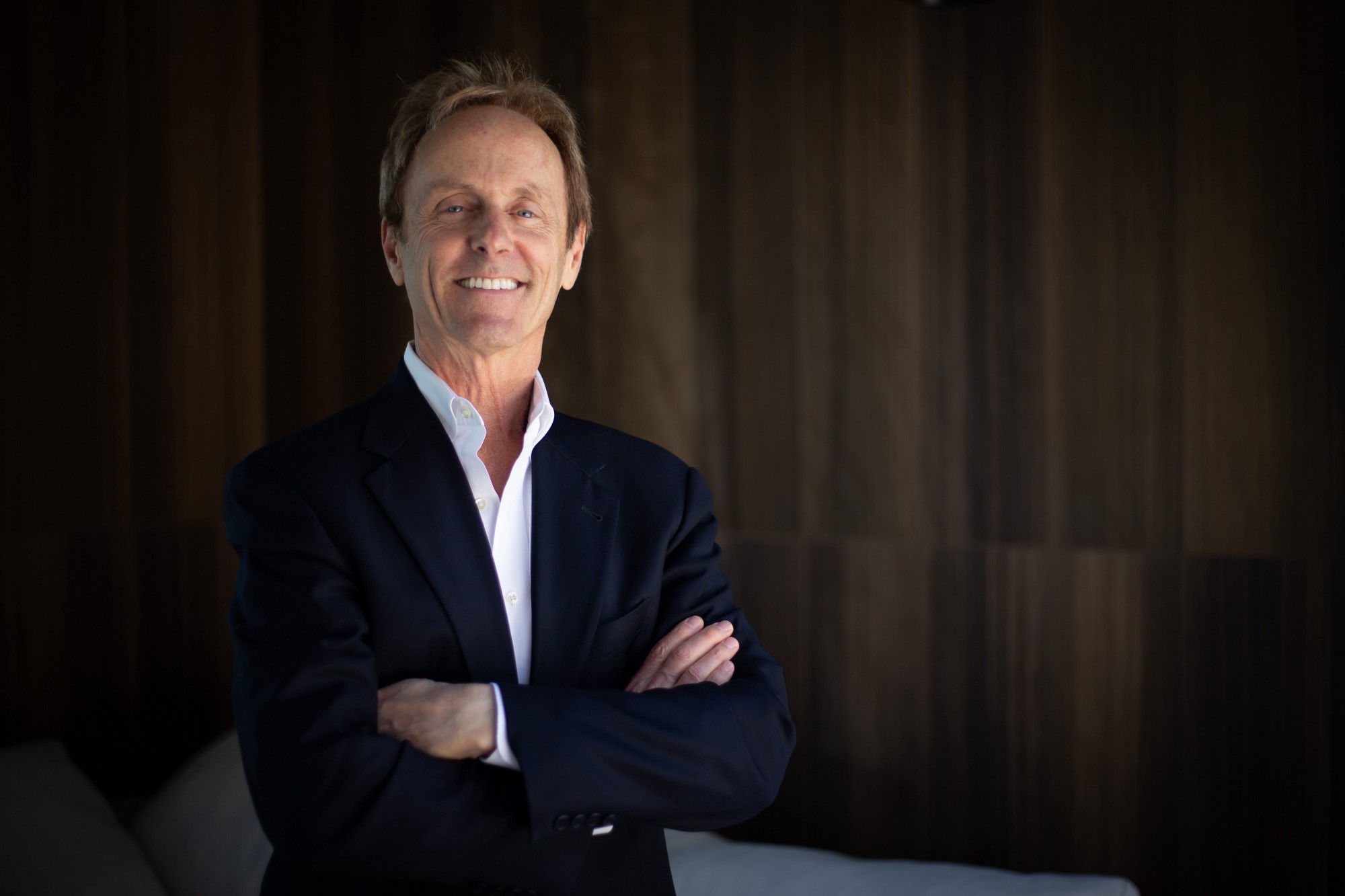 未来工作
未来工作
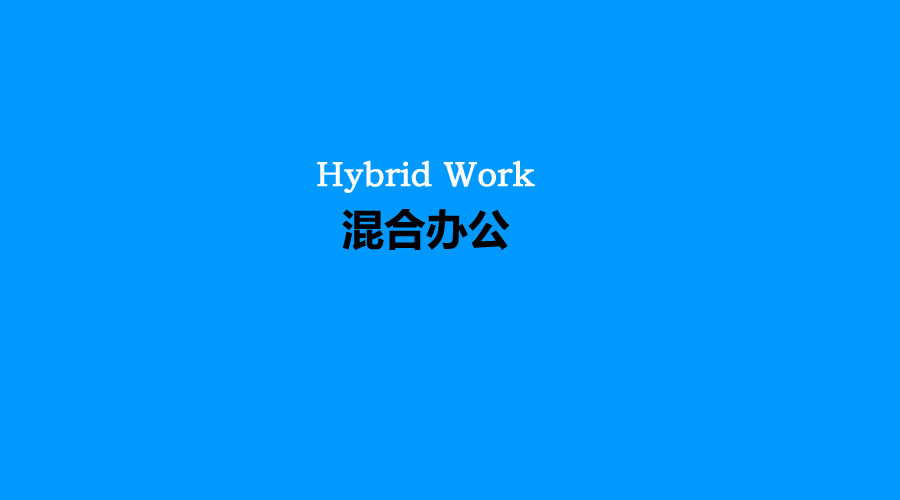 未来工作
未来工作
 未来工作
未来工作
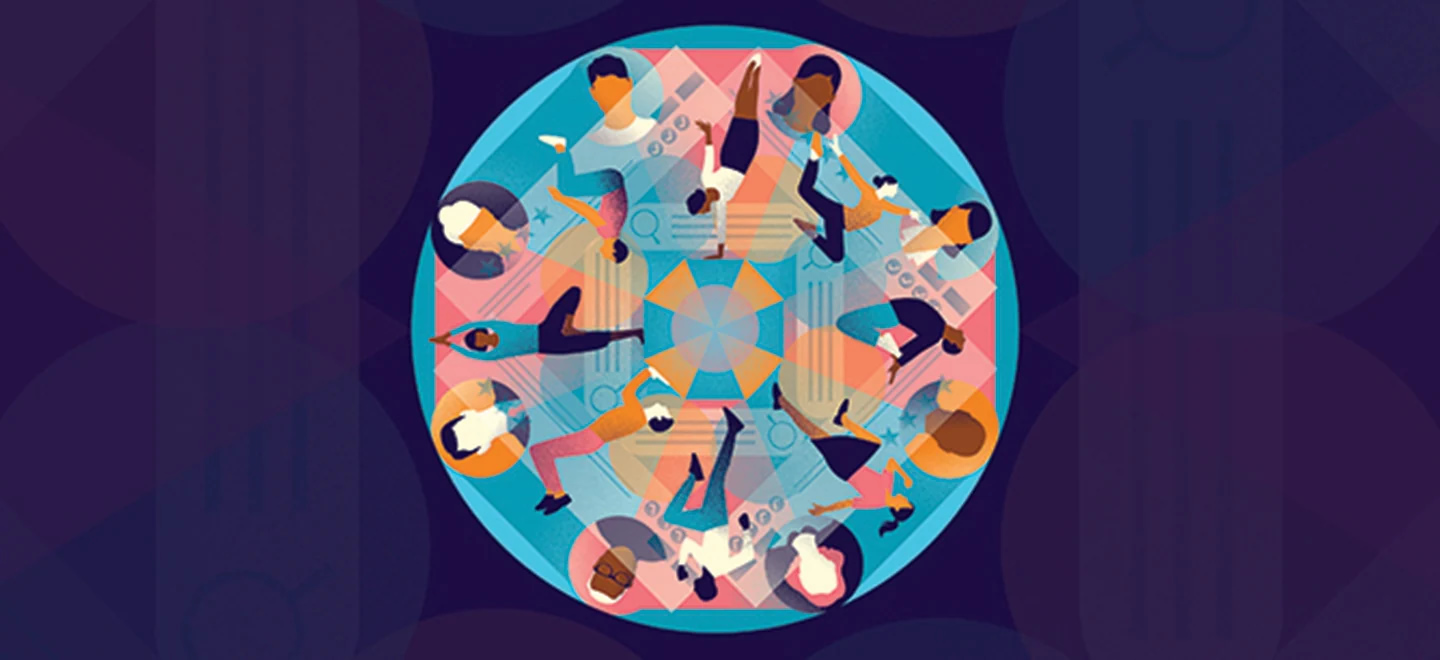 未来工作
未来工作
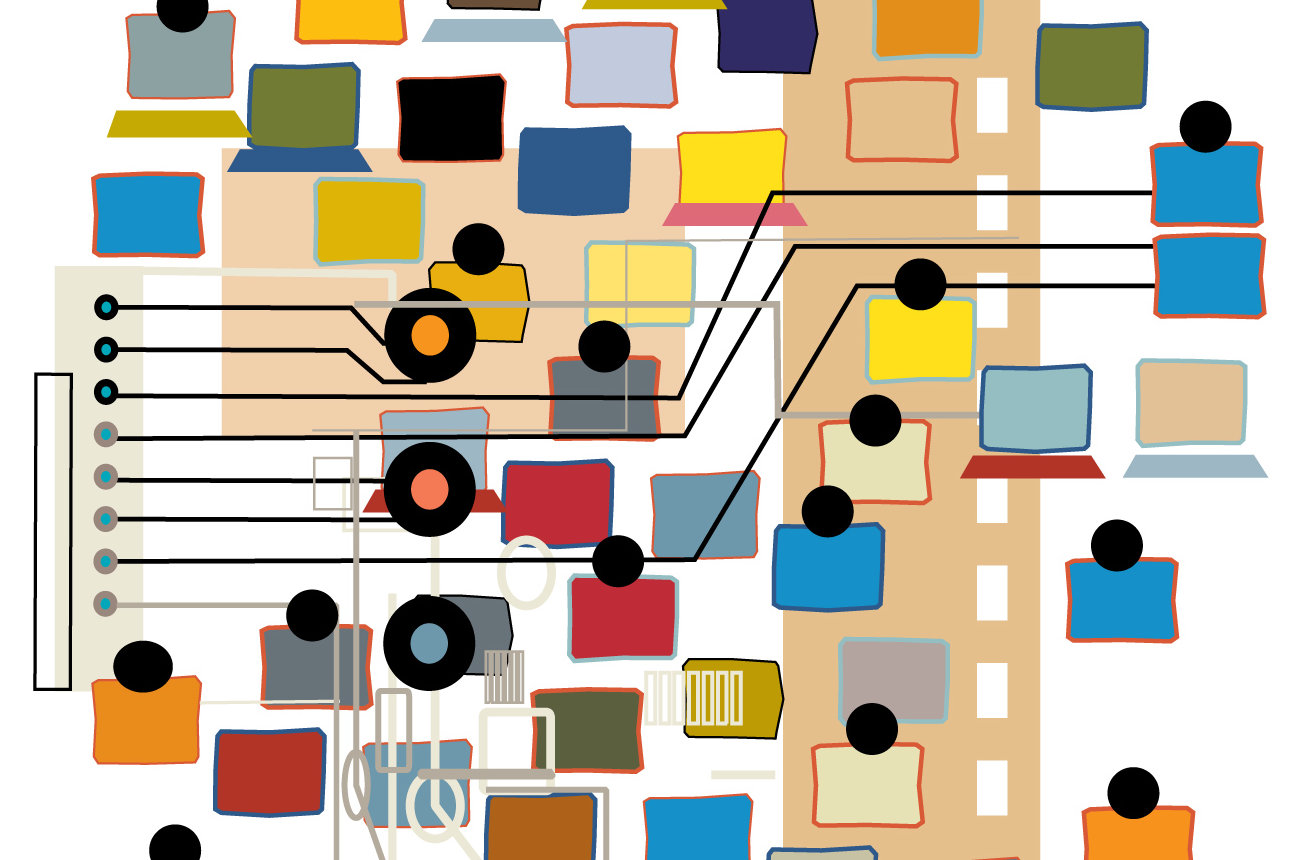 未来工作
未来工作
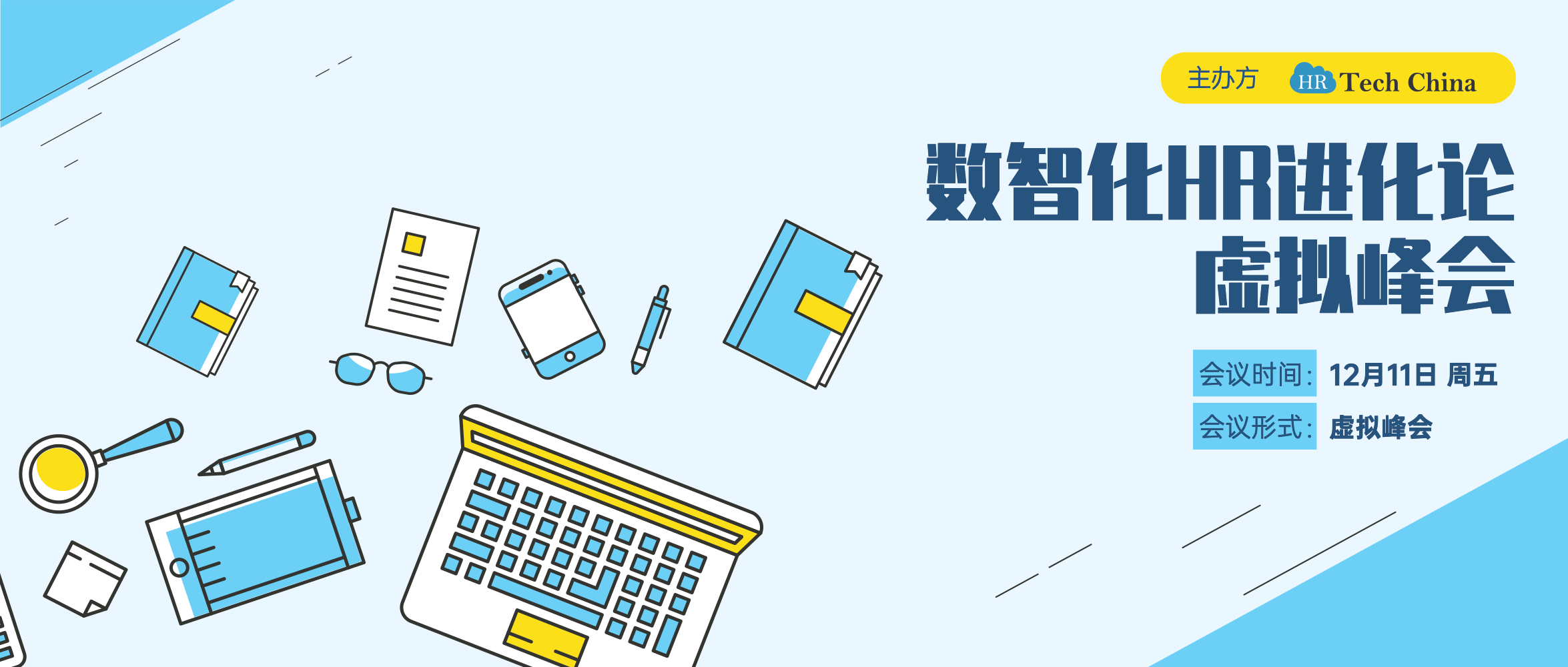 未来工作
未来工作
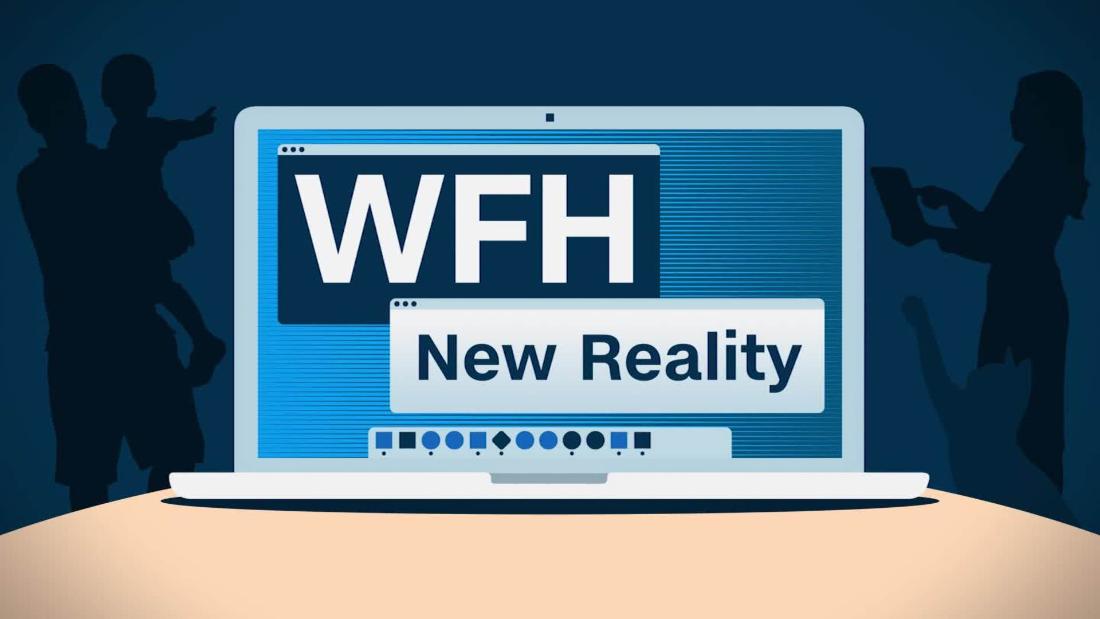 未来工作
未来工作
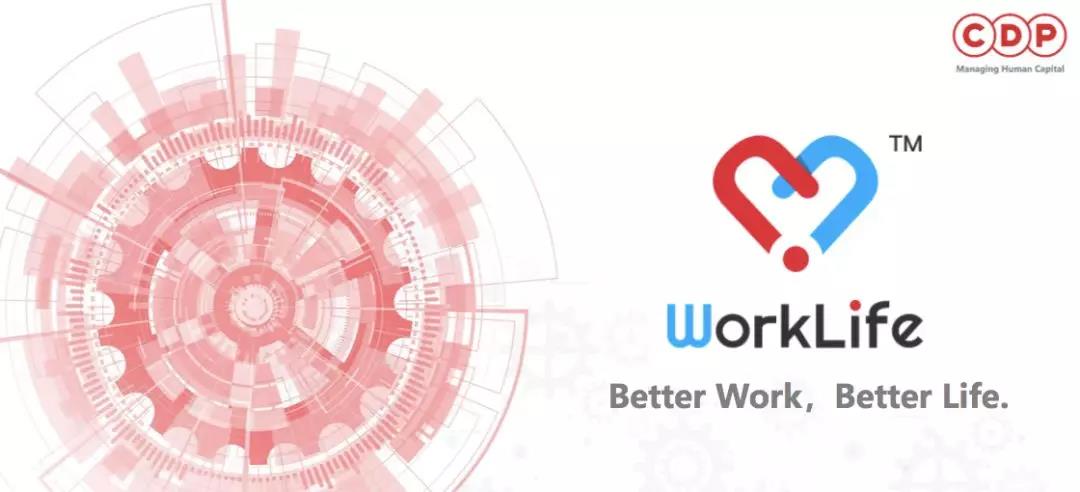 未来工作
未来工作
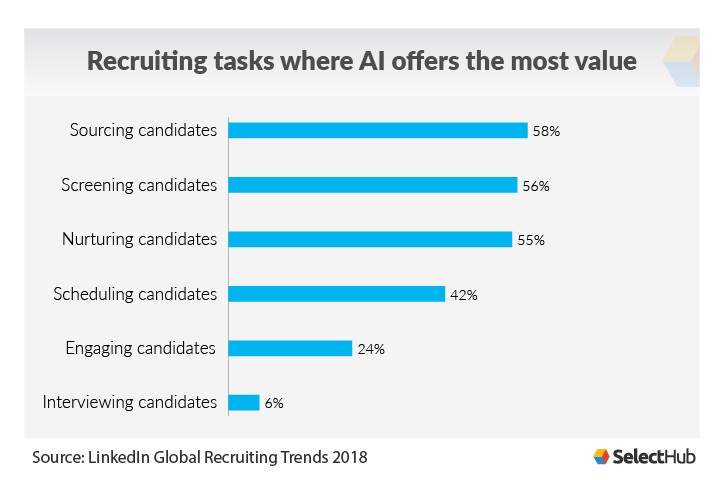 未来工作
未来工作
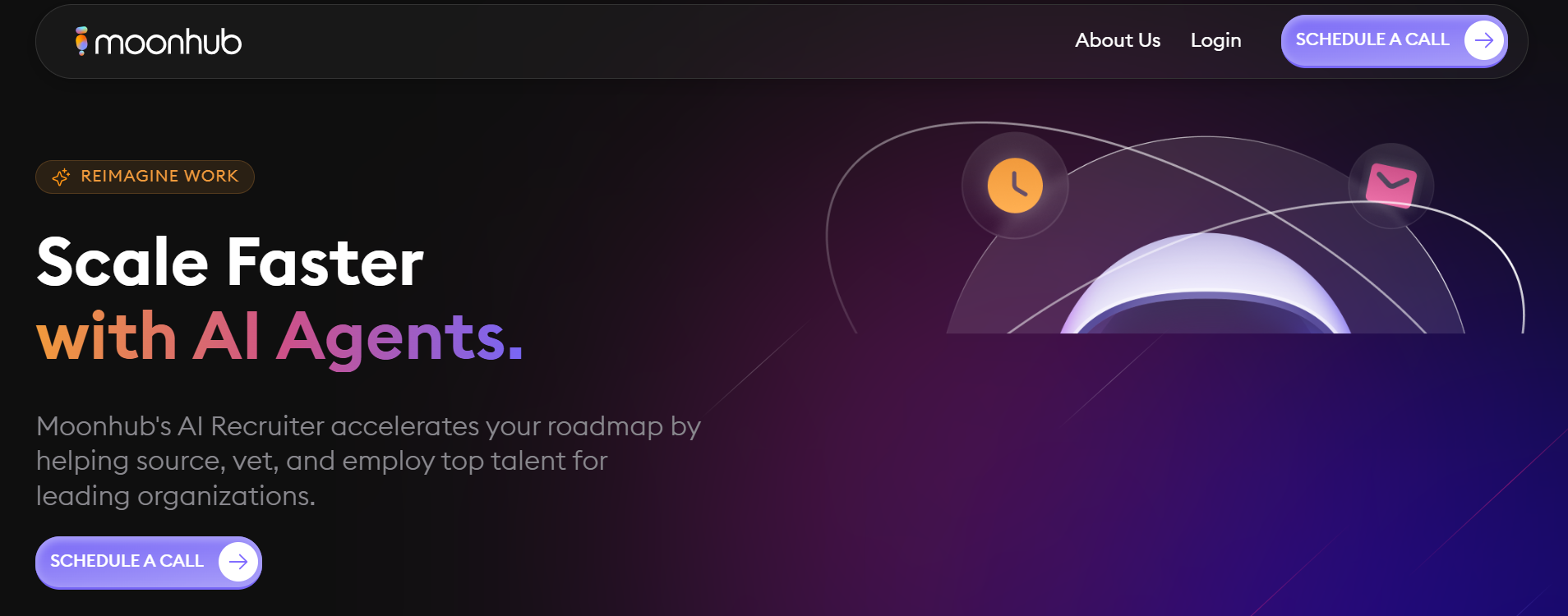




 扫一扫 加微信
hrtechchina
扫一扫 加微信
hrtechchina

